
- GENERAL TRAVEL


Should You Use Cash or Credit Card When Traveling?

Julie fell in love with traveling in Costa Rica which led to years of volunteering, teaching, and...
- button]:border-none [&>button]:bg-white [&>button]:hover:cursor-pointer [&>button]:hover:text-cyan-400"> button]:hover:text-cyan-400 [&>button]:bg-white hover:cursor-pointer" height="1em" width="1em" xmlns="http://www.w3.org/2000/svg">
Traveling to a new place can be exhilarating, but also intimidating. You’ve most likely spent a good chunk of change (not to mention time) preparing for your trip, from booking transportation , to activities , to accommodation . After that, you’ll also need to spend a bit more time thinking through how you’ll handle expenses while abroad, and whether to use cash or credit card when traveling. Trust us: The best time to start thinking about money is before you’re spending it!
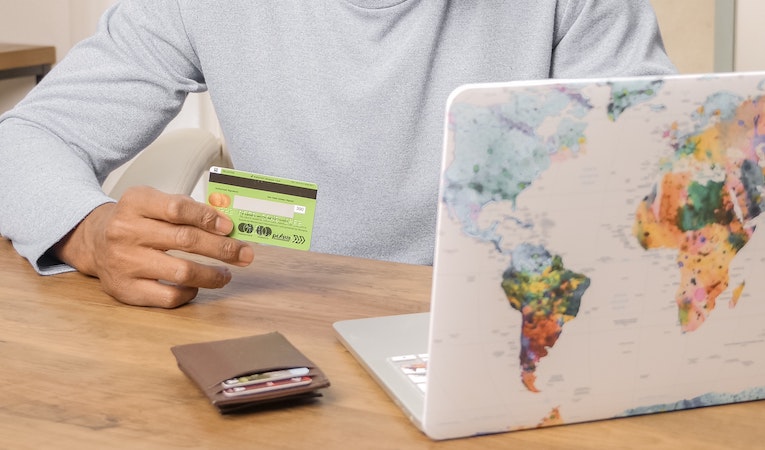
Time to do some budgeting and calculations!
Just a few of the additional costs of travel to keep in mind before, during, and after your trip include exchange rates, foreign transaction fees, and ATM fees. All that considered, you’ll need to decide for yourself whether it’s better to use cash or credit cards when traveling.
READ MORE: Traveling on a Student Budget? You Need This Budget Planner
Is it better to travel with cash or card.
Okay, let’s get right down to it. Is is better to travel with a credit/debit card or local cash? Lots of people think it’s better to take cash out of local ATMs when you arrive at your destination, in order to save on exchange fees and credit card fees. On the flipside, others prefer using a credit card while traveling because it can be more reliable and earn you points on your account.
So, is one better than the other? It depends. When deciding to travel with cash or card abroad, consider the following pros and cons:
Pros and cons of using a credit card abroad
- Pro : May offer a better exchange rate than when using cash
- Pro : If lost or stolen, a card is easier to replace and potentially get your money back
- Pro : More secure than carrying cash
- Pro : Score points on credits that can be used for future travel and other purchases
- Con : If you forget to alert your bank, your charges could be flagged as fraudulent (and they may shut off your card, leaving you stranded)
- Con : You may be charged international transaction fees on every purchase
Pros and cons of using cash while traveling
- Pro : Avoid international transaction fees on your purchases
- Pro : You’ll always have money available for tips or cash-only vendors
- Pro : It supports the local economy more directly
- Pro : You can order local currency in advance from your bank or organizations like AAA
- Con : Less secure than carrying a card (lost or stolen cash is most likely gone forever)
- Con : ATM fees and account fees for cash withdrawls abroad can be huge, especially at out-of-network ATMs
- Con : Difficult to know how much you’ll need, potentially leaving you stranded if ATMs or Western Union are scarce
READ MORE: 5 Best Credit Cards for Travel Rewards
Is it cheaper to use credit cards or cash abroad.
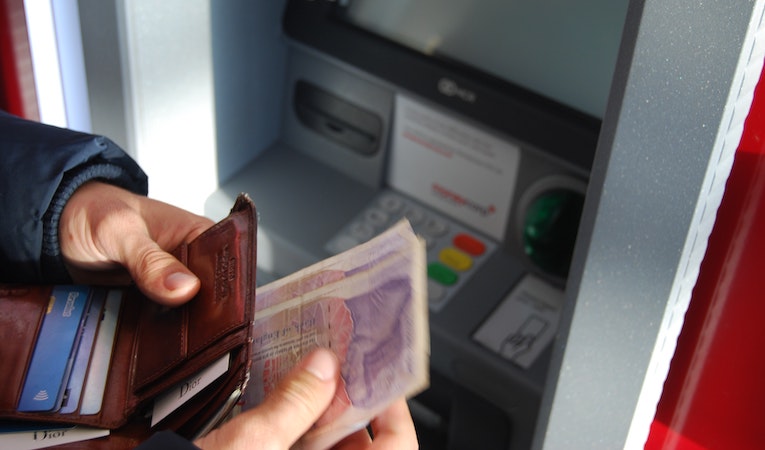
Whether cash or credit is cheaper comes down to exchange rates and transaction fees.
Since many of the pros of using cash or card depend on exchange rates, you’ll want to first understand what they are and how they can determine if it’s cheaper to use credit cards or cash during your travels.
For those who aren’t familiar, exchange rates can be defined as “the value of one currency for the purpose of conversion to another.” Anywhere you travel that doesn’t use the same currency you use at home, you’ll need to convert money so you can spend it.
In some countries, you’ll be able to use your own currency which the vendor then exchanges, but it’s best to take the “when in Rome” attitude, and make the exchange yourself at a kiosk, hotel, or other reputed place of business that offers exchange services.
Keep in mind that exchange rates vary by location. For example, airport kiosks don’t often have the best rates, so it’s a good idea to shop around or go to a local bank instead. It’s very easy to Google what a good rate would be.
Additionally, when you use a credit card, you must also keep in mind exchange rates. Some cards may have better rates than others (this information is also searchable).
This brings us to international and foreign transaction fees! Even with a good exchange rate, you’ll often be charged a foreign transaction fee when making credit card purchases abroad. Luckily, some credit card companies have partnerships with banks abroad, and offer lower (or zero) fees, especially credit cards intended for travel .
It’s best to do some research prior to your trip to see which of your credit cards is better to use (or if this time around you should stick to cash)!
Pro tip : Some vendors will ask you if you want to pay in local or foreign currency when you’re making a credit card purchase. It’s best to select local currency, as that will get you the closest to the fair market rate!
What’s the best way to get cash when traveling abroad?
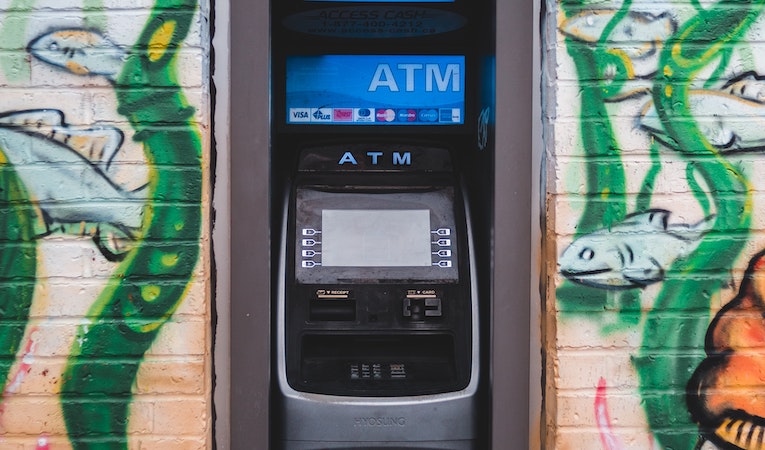
Be sure to research how easy it is to find an ATM in your destination.
Most likely the easiest way to get cash when traveling is by using the same debit card you’d use at home at a local ATM . Just as with credit card foreign transaction fees, when you use your debit card to take out cash at the ATM, you may be charged a fee. Usually, it’s $2 to $7 dollars on any cash withdrawal.
That being said, it’s better to withdraw a large amount of cash at once to avoid multiple fees . The percentage charged by your bank on international withdrawals is most likely fixed, so by making larger withdrawals, you’re actually getting more bang for your buck where ATM fees are concerned.
Avoid scams by going to an actual bank to withdraw funds. Make sure you’re checking that you’re not being charged an exorbitant fee to withdraw your cash, and there isn’t a large minimum amount (you don’t want to carry too much money around with you with the risk that it will be lost or stolen).
Again, your bank may have a partner in the country you’re traveling to where you can withdraw cash with no fee, so try to find out if this is the case prior to jetsetting!
Another reason to get in touch with your bank prior to leaving your home country is to avoid the hassle of them potentially flagging any of your international purchases as fraudulent. Some banks will flag an international transaction until you verify you are indeed out of the country , which may delay being able to use your cards.
Honestly, it’s a great idea to pre-order some cash in the local currency through a travel agency (like AAA) to make sure you have a backup method of payment, at least for your first day or two abroad— especially if you won’t have phone service when you land . No phone service and no cash on hand will leave you stressed AF, especially if you’re landing in the middle of the night.
If for any reason you are not able to use a credit card abroad, other options include prepaid cards from Visa, Mastercard, or other large credit card companies, or even travelers’ checks. While it’s not ideal to carry around large amounts of cash, travelers’ checks can be refunded if lost or stolen.
Should I carry local cash when traveling?

It’s always a good idea to have some local cash on hand.
While credit cards are easy to carry and more secure than cash, you should always have some local cash on you when traveling. It’s just good sense. Besides the fact that some local shops and vendors won’t accept credit cards, having some cash provides a safety net in case your bank shuts off your card for any reason. Plus, cash tips are always more appreciated than digital.
How much cash should I travel with?
How much cash you should travel with largely depends on your destination: How much is the cost of living? Is tipping expected? How long will you be staying? Do many of the activities you want to do or places where you want to do business accept credit cards or online booking?
These are all questions you should ask yourself when determining to use cash or card when traveling, and just how much cash you should travel with. But, if you want a number to work with, we suggest having $200 on hand when you land in your destination , just to be safe. If you decide to go cash-only for your entire trip abroad, then maybe factor in a bit more for your first few weeks.
Keep in mind you’ll also want a safe place to keep your cash. Take with you what you need for the day, perhaps in a money belt or other secure item, and leave the rest in your accommodation, ideally locked up. Most hostels and hotels around the world provide safes or lockboxes in their rooms, so you’ll be golden.
Plan your next trip with GoAbroad.com’s Travel Resources Hub
Cash or credit card it’s up to you.
So, should you use cash or credit cards when traveling? A mix of both may be the answer! If you do a bit of research prior to your trip, you’ll be able to safely estimate how much cash you should bring with you, how much and where to withdraw, and what your bank and credit card company’s policies are regarding international expenditures.
Ready to go abroad? Talk to our FREE Online Advisor and get 5 personalized program matches

Explore Programs on GoAbroad.com
Related Articles

By Cecilia Polanco | 3 days ago

By GoAbroad Writing Team | 3 days ago

By GoAbroad Writing Team | 4 days ago

By Danielle DeSimone | 4 days ago
Popular Searches
Study abroad programs in italy, study abroad programs in spain, marine biology study abroad programs, study psychology abroad, fall study abroad 2024, spring study abroad programs, recommended programs.

2569 reviews
International TEFL Academy

1682 reviews
International Volunteer HQ [IVHQ]

1919 reviews
MAXIMO NIVEL

563 reviews
Intern Abroad HQ
For Travelers
Travel resources, for partners.

© Copyright 1998 - 2024 GoAbroad.com ®
- Study Abroad
- Volunteer Abroad
- Intern Abroad
- Teach Abroad
- TEFL Courses
- Degrees Abroad
- High School Abroad
- Language Schools
- Adventure Travel
- Jobs Abroad
- Online Study Abroad
- Online Volunteer Programs
- Online Internships
- Online Language Courses
- Online Teaching Jobs
- Online Jobs
- Online TEFL Courses
- Online Degree Programs
Compare rates and fees for your money transfers.
Read our range of money transfer and banking guides.

Reviews and comparisons of the best money transfer providers, banks, and apps.
Helpful tools to ensure you get the best rates on money transfers.
A Guide to Travel Money Cards
Often deemed the cheapest way to spend money abroad , travel money cards are deemed a failsafe option for many travellers. Given the rapid growth of the financial services sector, we want to find out if travel money cards are still as cutting edge as they once were, by comparing them to the new alternatives. Our job is to identify the best international money transfer services and payment providers in the industry: will travel money cards make the cut?
What are travel money cards?
Travel money cards are a popular payment method for individuals headed abroad. Customers will load funds onto the card, using the money as foreign currency when overseas, much like a debit card is used at home. Also known as travel money prepaid cards or currency cards, they facilitate free foreign transactions and overseas ATM withdrawals.
We recommend finding a travel money card which lets you lock-in a favourable exchange rate and supports multiple currencies on one card, to make sure you are securing a flexible and cost-effective deal.
How do you use a travel money card?
Using a travel money card should be straightforward and stress-free. Simply load funds onto the card before you leave, and once abroad, you will be able to reload funds and change currencies using the website or associated money transfer app . The card can be used to make withdrawals, in-store purchases and book travel arrangements.
Where can I get a travel money card?
Travel money cards are available from different retailers and can be purchased and preloaded online, over the phone or in-store, depending on the brand. In the UK, popular brands include Travelex and the Post Office.
Where can I use a travel money card?
Again, this depends on the brand and where you get your money travel card from. Available currencies vary from card to card but commonly used currencies include US Dollars, UK Pound sterling, Euros, Japanese Yen and New Zealand Dollars. Make sure you check with the provider before ordering a travel money card.
How secure are travel money cards?
Generally, travel money cards are considered a lot safer than handling multiple currencies in cash, or travellers cheques, as your provider will be able to cancel it if need be. Furthermore, some of the best travel money cards employ an equivalent level of security to traditional debit cards, including a PIN code, touch ID and face recognition.
Many consider it safer to use a travel money card abroad than a debit card, as they are not associated with your bank account and therefore cannot be linked if lost or stolen.
Travel money cards vs. Credit cards: What is the difference?
One of the biggest advantages of using a travel money card is that your chosen currency is preloaded before you arrive in the foreign country and you won’t be charged conversion fees. This means you are able to benefit from the most favourable exchange rates, locking it in ahead of time and using the funds at a later date.
Most people who use their credit card abroad do it because it is more convenient. The cost of this convenience, however, can sometimes amount to 3 - 5% per use, depending on the transaction and financial institution. Making a foreign ATM withdrawal with your credit card can incur flat-fees of $5 and up, each time.
This being said, there are some excellent traveller credit cards on the market, so we would recommend users compare exchange rates and transfer fees offered by each provider before making a decision on which card is more beneficial.
If you're planning on using your credit card, we suggest you take a look at our credit card wire transfer guide.
What are the alternatives to travel money cards?
Multi-currency accounts.
International money transfer companies are often tailoring their products and services to meet the needs of their customers. Wise , offers a multi-currency account designed with “international people" in mind. This savvy travel credit card is aimed at frequent flyers who want to spend in various currencies in over 200 countries. Wise is a reliable company to trust with your overseas spending habits.
Challenger banks
More and more alternative service providers are popping up around the world, many of them offering reputable banking features for the modern traveller. In a bid to distinguish themselves from traditional banks, challenger banks are scrapping fees on foreign exchange and international spending. Monzo customers, for example, can benefit from free international ATM withdrawals as well as fee-free spending overseas.

We hope this guide to travel money cards has enlightened you and helped you make a decision about whether this is a suitable payment method for your next trip overseas. We appreciate the value of your hard-earned cash and want all our customers to benefit from the best possible rates when dealing with international payments. Use our comparison tool today to make sure you are offered the most desirable exchange rate for your currency.
Related Content
- UK Passports Offer Better Travel Freedom Since Brexit The Henley Passport Index is an annual research project that evaluates the relative power of passports from 199 countries. It determines how many locations each passport allows its holders to access visa-free or with visa-on-arrival, creating a global ranking. June 5th, 2023
- Revealed: Summer Cruises Increase your CO2 Emission by 4700% per KM vs Train Travel Travelling by cruise ship rather than train this summer could increase passengers’ CO2 emissions each kilometre by 4716%, MoneyTransfers.com can reveal. June 5th, 2023
- Cheapest European city breaks on the British government’s exemption list The study incorporated numerous factors across a variety of areas including: February 15th, 2023
- 10 Years of Data Predicts the Go-to Holiday Destinations for Brits Now COVID Is Over To establish the expected changes to tourism and GBP(£) spend abroad going forwards, MoneyTransfers.com analysed 10 years' worth of UK travel data from the Office for National Statistics (ONS) - 2009 - 2019, to discover and predict where Brits will be travelling to in the next 10 years now that travel is well and truly back on again since Covid! February 19th, 2024
.jpg)
Contributors

April Summers
Whether to Use Cash, Credit, or Debit While Traveling
Traveling with money is a task that makes many people uneasy, especially when foreign currency is involved. Carrying cash abroad can be deemed as risky, but credit and debit cards can be notoriously finicky because of bank security and the fees that come with international credit charges can have a major effect on your funds in the long run. So, what's a poor old wandering soul to do?
These are questions to bring up with your bank, of course, but the safest method is perhaps to use them all. In other words: The "don't put all your eggs in one basket" saying applies. Using a mix of cash, credit, debit, and maybe even the odd traveler's check ensures that if the fees for one method are particularly astronomical, your bank account won't take as much of a toll. It also helps if one of your cards or a wad of cash is lost or stolen.
Cash is convenient and relatively cheap to exchange . You can take money from your home country into a foreign bank almost anywhere in the world and they'll easily exchange it without the worry of tiny bank fees adding up, pesky ATM fees, or losing out on a bad exchange rate. Alternatively, though, carrying coins and paper money is a security risk. When stolen, it cannot be replaced. The key is to have just a small amount of backup cash stashed away in a safe money belt.
If properly protected, a debit card can't be stolen as easily as cash. Debit cards can be used across many countries , although you should notify your bank of international usage first. Better yet, they can be used to retrieve cash—if the occasion calls for it—at an ATM and are all-around less bulky than carrying cash on your hip.
Be aware, however, that not all ATM machines (especially in more rural places) accept foreign debit cards and certainly not every restaurant and store will, either. Shops have been known to ban foreign debit altogether, so carrying a form of backup currency is always wise. Additionally, using debit regularly could lead to an accumulation of transaction fees. At ATMs, for instance, you'll be charged for converting funds into local currency and , if outside of your network, an additional ATM fee.
You may also need to change your PIN before you go, seeing as some countries' ATM machines can't process PINs with more than four digits. Others can't process ones with zeros. Lastly, before swiping your debit card abroad, educate yourself on ATM scams and learn how to avoid them.
Credit Cards
Like debit cards, credit cards are small and packable. They're replaceable and reliable. In fact, some hotels only accept authorization via credit, so this may be an integral method for you. MasterCard and Visa are widely accepted in other countries and you can use them for ATM transactions, too.
The bad news is that unscrupulous merchants can steal your credit card information and while you can dispute fraudulent charges and eventually get them removed from your account, the process can be grueling. You may need to cancel your card mid-trip to resolve fraud issues. It would be wise to also find out what your bank charges in international transaction fees before swiping your card haphazardly.
Prepaid Travel Cards
Prepaid travel cards like Visa TravelMoney look like credit cards but function more like a modern version of travelers checks. You simply load the card with money from your bank account and use it like a debit card at ATMs or like a credit card at merchants and hotels. They're locked with a PIN number, as your other cards are, for extra security, but they can sometimes be difficult to use at ATM machines. Additionally, fees for foreign currency transactions can be extremely high—as much as 7 percent in some cases.
Traveler's Checks
Although traveler's checks are historically secure and can be replaced if lost or stolen, they're hardly used anymore. Not many merchants or banks still accept them, even if they're written in their local currency. Merchants may charge you an additional fee for paying with traveler's checks, which are expensive to purchase in the first place (on top of the standard service fee, you'll also pay for shipping if you order them online). Not only are they one of the bulkiest means of payment to carry with you, they're one of the least useful, too.
Currency in Egypt: Everything You Need to Know
9 Tips for Using Your ATM card in Europe
The 11 Best Travel Money Belts of 2024
A Traveler's Guide to the Yen
What's the Best Way to Bring Spending Money to the UK?
Tips for Changing Your Money Abroad
Currency Converters
Using ATMs in Peru
Exchanging Currency in France
Tips for Using Debit and Credit Cards in Canada
Using Your Debit Card Overseas
Money in Germany
What Is an Exchange Rate and What Does It Mean?
How to Keep Your Money Safe While Traveling
How to Exchange Money in China
The 7 Best Passport Holders of 2024, Tested and Reviewed
Here Are the Four Best Travel Money Cards in 2024

François Briod
Co-Founder of Monito and money transfer expert, François has been helping Monito’s users navigate the jungle of money transfer fees, bad exchange rates and tricks for the last ten years.
Jarrod Suda

A writer and editor at Monito, Jarrod is passionate about helping people apply today’s powerful finance technologies to their lives. He brings his background in international affairs and his experiences living in Japan to provide readers with comprehensive information that also acknowledges the local context.
Links on this page, including products and brands featured on ‘Sponsored’ content, may earn us an affiliate commission. This does not affect the opinions and recommendations of our editors.
From the multitude of bank fees and ATM charges to hidden currency conversion fees, there's no question that spending your money abroad while travelling can be costly — and that's saying nothing about the cost of the holiday itself!
As you prepare for your trip abroad, the golden rule is that you'll save the most money by using the local currency of your destination. This means withdrawing local cash at foreign ATMs and using a debit card to pay directly in the local currency. For example, if you're from the UK, using your bank's debit card that accesses your British pounds will likely lose you money to hidden fees at ATMs abroad and at local merchants.
In general, we rate Revolut as the best travel card all around. Its versatile account and card can be used to spend like a local pretty much anywhere in the world. ✨ Get 3 months of free Revolut Premium as a Monito reader with our exclusive link .
If you're from the EU, UK, or US, here are a few more specific recommendations to explore:
- Best for travelling from the UK: Chase
- Best for travelling from the US: Chime ®
- Best for travelling from the Eurozone: N26
If it's not possible for you to spend in the local currency when travelling abroad, then spending in your home currency while using a card that doesn't charge any hidden exchange rate markups from your bank (e.g. only the VISA or Mastercard exchange rates to convert currency) is still a good bet for most people.
In this guide, we explore cards that waive or lower ATM fees and that hold multiple currencies. Spend on your holiday like a local and enjoy peace of mind after each tap and swipe!
Best Travel Cards (And More!) at a Glance
Best travel money cards.
- 01. What is the best best multi currency card? scroll down
- 02. Are prepaid currency cards really it? scroll down
- 03. Monito's best travel money card tips scroll down
- 04. FAQ about the best travel cards scroll down
Revolut: Best All-Rounder
Revolut is one of the most well-known fintechs in the world because it offers services across Europe, the Americas, Asia, and Oceania.

- Trust & Credibility 8.9
- Service & Quality 7.9
- Fees & Exchange Rates 8.3
- Customer Satisfaction 9.4
Revolut is available in many countries. You can double-check if it's available in yours below:
Here's an overview of Revolut's plans:
Revolut Ultra is currently only available in the UK and EU.
Like Wise, Revolut converts your currency to the local currency of your travel destination at an excellent exchange rate (called the 'Revolut Rate', which, on weekdays, is basically on par with the rate you see on Google), making it a good way to buy foreign currency before travelling abroad. As always though, bear in mind that Revolut's exchange rates might be subject to change.
Revolut's Standard Plan only allows currency exchange at the base mid-market exchange rate for transfers worth £1,000 per month. ATM withdrawals are also free for the first €200 (although third-party providers may charge a withdrawal fee, and weekend surcharges may also apply). These allowances can be waived by upgrading memberships.
N26: Good Bank For EU Travellers
One of the most well-known neobanks in Europe, N26 and its debit card operate in euros only. However, N26 is a partner with Wise and has fully integrated Wise's technology so that you never have to pay foreign transaction fees on your purchases outside of the eurozone. While N26 does not have multi-currency functionality, N26 will apply the real exchange rate on all your foreign purchases and will never charge a commission fee — making N26's card a powerful card for EU/EEA residents who travel across the globe.

- Trust & Credibility 7.9
- Service & Quality 8.0
- Fees & Exchange Rates 9.3
- Customer Satisfaction 8.1
These are the countries in which you can register for an N26 account:
And here is an overview of the various plans and account:
This low-fee option for banking is also ideal for travellers who do not belong to a European bank but frequent the Eurozone. For example, N26 is available for residents and citizens of Switzerland, Norway, and other European Economic Area countries that do not run on the Euro.
These citizens, who are in close proximity to the Eurozone, will save each time they spend with an N26 card while in Europe. N26 provides three free ATM withdrawals per month in euros but does charge a 1.7% fee per ATM withdrawal outside of Europe.
Take a look at our guide to the best travel cards for Europe to learn more.
Wise: Best For Multi-Currency Balances
Load up to 54 currencies onto this card at the real exchange rate, giving you access to truly global travel.

- Trust & Credibility 9.3
- Service & Quality 8.9
- Fees & Exchange Rates 7.6
- Customer Satisfaction 9.6
These are the countries in which you can order a Wise debit card:
Unlike banks, credit unions, airport kiosks, and foreign ATMs, Wise is transparent about never charging a hidden exchange rate margin when you convert your home currency into up to 54 currencies. The live rate you see on Google or XE.com is the one you get with Wise.
An industry-low commission fee per transaction will range from 0.35% to 2.85%, depending on the currency.
Chase: Great UK Bank For Travel
A recent arrival from the USA, Chase is one of the UK’s newest digital challenger banks and comes with a rock-solid reputation and no monthly charges, no currency conversion charges, no withdrawal fees, and no other charges for everyday banking from Chase. It’s a simple, streamlined bank account with an excellent mobile banking app and a great cashback offer. However, it doesn’t yet offer more advanced features like international money transfers, joint accounts, business banking, overdrafts and loans, and teen or child accounts.

- Trust & Credibility 10
- Fees & Exchange Rates 10
- Customer Satisfaction 8.7
Chime: Great Account For US Travelers
Chime is a good debit card for international travel thanks to its no foreign transaction fees¹. Unlike multi-currency accounts like Revolut (which let you hold local currency), Chime uses the live exchange rate applied by VISA. This rate is close to the mid-market rate, and Chime does not add any extra markup to your purchases, although out-of-network ATM withdrawal and over-the-counter advance fees may still apply.

- Trust & Credibility 9.5
- Service & Quality 8.8
- Fees & Exchange Rates 9.8
While Chime waives ATM fees at all MoneyPass, AllPoint, and VISA Plus Alliance ATMs within the United States, this fee waiver does not extend to withdrawals made outside the country. For withdrawals abroad, Chime applies a $2.50 fee per transaction, with a daily withdrawal limit of $515 or its equivalent. This is in addition to any fees charged by the ATM owner. Therefore, we recommend Chime primarily for card purchases rather than relying on it for withdrawing cash while traveling internationally.
- No foreign transaction fees ¹;
- Uses VISA's exchange rate ( monitor here ):
- A $2.50 fee per ATM withdrawal made outside of the United States;
- More info: Read our Chime review or visit their website .
Best Travel Money Cards in 2024 Compared by Country
In the table below, see our comparison summary of the four best travel cards for 2024 by country:
Last updated: 8 January 2024
What's The Best Prepaid Card to Use Abroad?

Travel cards come in many varieties, such as standard credit cards or debit cards with no foreign transaction fees or cards that waive all foreign ATM withdrawal fees.
What is a Multi-Currency Card?
Multi-currency cards are a specific type of travel card that allows you to own all kinds of foreign currencies, which you can instantly access when you pay with your card abroad. By spending the local currency in the region of travel , you bypass poor foreign exchange rates. ATMs and cashless payment machines will treat your card like a local card.
We have already mentioned a few multi-currency cards in this review, but we will also introduce Travelex . Travelex's Money Card also allows you to top up several foreign currencies — albeit at exchange rates slightly poorer than the real mid-market rate .
Wise Account
Wise has one of the best multi-currency cards available on the market.

Read our full review for more details.
Revolut is impressive for its vast options in currencies and its additional services.
Our in-depth review explores Revolut's services in detail.
Travelex offers a prepaid travel money card that supports 10 currencies and waives all ATM withdrawal fees abroad.

- Trust & Credibility 9.0
- Service & Quality 5.8
- Fees & Exchange Rates 7.1
- Customer Satisfaction 9.3
Travelex charges fees, which fluctuate according to the exchange rates of the day, in order to convert your home currency into the currencies that it supports. But once the currency is on the card, you'll be able to spend like a local. Learn more with our full review .
Don’t Let Banks, Bureaux de Change, and ATMs Eat Your Lunch 🍕!
Are you withdrawing cash at an ATM in the streets of Paris? Exchanging currencies at Gatwick airport? Paying for a pizza with your card during a holiday in Milano? Every time you exchange currencies, you could lose between 2% to 20% of your money in hidden fees . Keep reading below to make sure you recognize and avoid them.
Currency Exchange Fees Eating My Lunch? What’s That?
You’re often charged a hidden fee in the form of an alarming exchange rate.
At any given time, there is a so-called “ mid-market exchange rate ” — this is the real exchange rate you can see on Google . However, the money transfer provider or bank you use to exchange currencies rarely offers this exchange rate. Instead, you will get a much worse exchange rate. They pocket this margin between the actual rate and the poor exchange rate they apply, allowing the bank or money transfer provider to profit from the currency exchange.
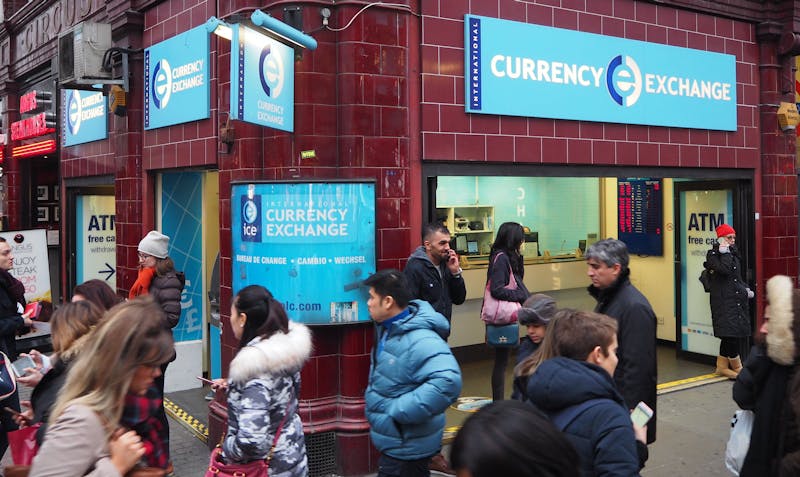
In other words, you or your recipient will receive less foreign currency for each unit of currency you exchange. All the while, the provider will claim that they charge zero commission or zero fees.
So the question now is… how can you avoid them? Thankfully, the best travel money cards will allow you to hold the local currency, which you can access instantly with a tap or swipe. Carrying the local currency avoids exchange rate margins on every purchase.
Top Travel Money Tips
- Avoid bureaux de change. They charge between 2.15% and 16.6% of the money exchanged.
- Always pay in the local currency and never accept the dynamic currency conversion .
- Don't use your ordinary debit or credit card unless it's specifically geared toward international use. Doing this will typically cost you between 1.75% and 4.25% per transaction. Instead, use one of the innovative travel money cards below.
By opting for a travel card without FX fees, you can freely swipe your card abroad without worrying about additional charges. However, saving money doesn't stop there. To make the most out of your travel budget, consider using Skyscanner , one of the most powerful flight search engines available that allows you to compare prices from various airlines and find the best deals.
With Skyscanner's user-friendly interface and comprehensive search options, you can discover cheap flights and enjoy your holidays with peace of mind and more money in your pocket.
Best Travel Money Card Tips

When you convert your home currency into a foreign currency, foreign exchange service providers will charge you two kinds of fees :
- Exchange Rate Margin: Providers apply an exchange rate that is poorer than the true "mid-market" exchange rate . They keep the difference, called an exchange rate margin .
- Commission Fee: This fee is usually a percentage of the amount converted, which is charged for the service provided.
With these facts in mind, let's see what practices are useful to avoid ATM fees, foreign transaction fees, and other charges you may encounter while on your travels.
Tip 1: While Traveling, Avoid Bureaux de Change At All Costs
Have you ever wondered how bureaux de change and currency exchange desks are able to secure prime real estate in tourist locations like the Champs-Élysées in Paris or Covent Carden in London while claiming to take no commission? It’s easy: they make (plenty of) money through hidden fees on the exchange rates they give you.
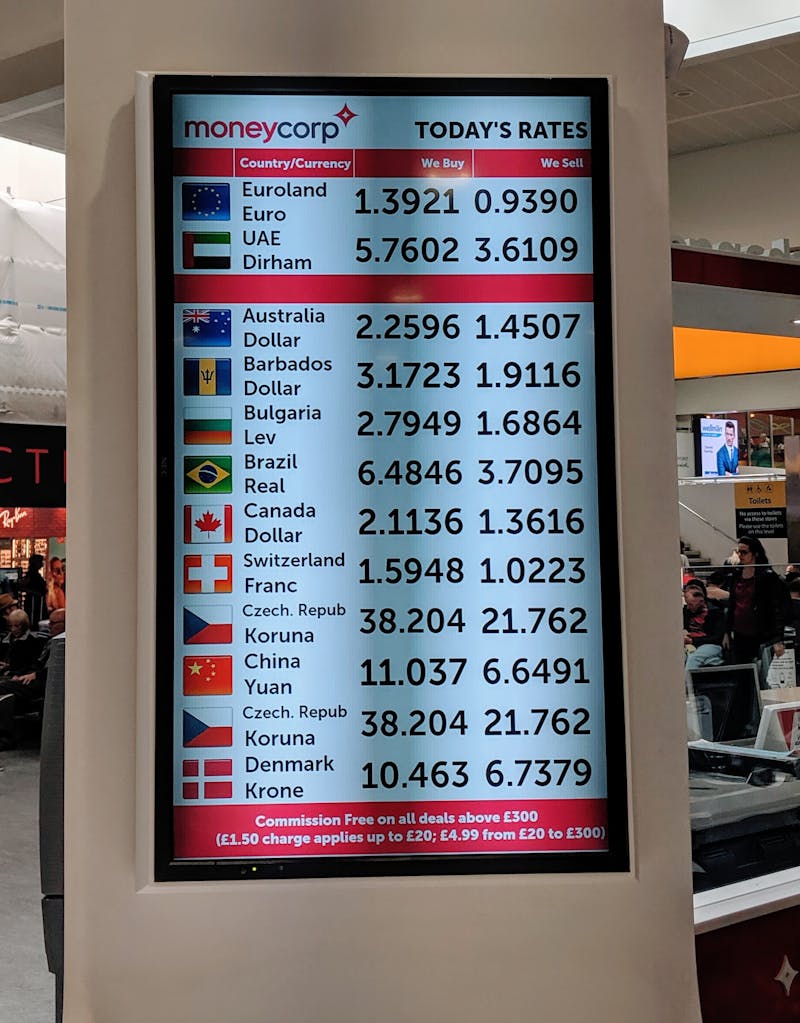
Our study shows that Bureaux de Change in Paris charges a margin ranging from 2.15% at CEN Change Dollar Boulevard de Strasbourg to 16.6% (!!) at Travelex Champs-Élysées when exchanging 500 US dollars into euros for example.
If you really want cash and can’t wait to withdraw it with a card at an ATM at your destination, ordering currencies online before your trip is usually cheaper than exchanging currencies at a bureau de change, but it’s still a very expensive way to get foreign currency which we, therefore, would not recommend.
Tip 2: Always Choose To Pay In the Local Currency

Don’t fall for the dynamic currency conversion trap! When using your card abroad to pay at a terminal or withdraw cash at an ATM, you’ve probably been asked whether you’d prefer to pay in your home currency instead of the local currency of the foreign country. This little trick is called dynamic currency conversion , and the right answer to this sneaky question will help you save big on currency exchange fees.
As a general rule, you always want to pay in the local currency (euros in Europe, sterling in the UK, kroner in Denmark, bahts in Thailand, etc.) when using your card abroad, instead of accepting the currency exchange and paying in your home currency.
This seems like a trick question - why not opt to pay in your home currency? On the plus side, you would know exactly what amount you would be paying in your home currency instead of accepting the unknown exchange rate determined by your card issuer a few days later.
What is a Dynamic Currency Conversion?
However, when choosing to pay in your home currency instead of the local one, you will carry out what’s called a “dynamic currency conversion”. This is just a complicated way of saying that you’re exchanging between the foreign currency and your home currency at the exact time you use your card to pay or withdraw cash in a foreign currency, and not a few days later. For this privilege, the local payment terminal or ATM will apply an exchange rate that is often significantly worse than even a traditional bank’s exchange rate (we’ve seen margins of up to 8%!), and of course, much worse than the exchange rate you would get by using an innovative multi-currency card (see tip #3).
In the vast majority of times, knowing with complete certainty what amount you will pay in your home currency is not worth the additional steep cost of the dynamic currency conversion, hence why we recommend always choosing to pay in the local currency.
Tip 3: Don't Use a Traditional Card To Pay in Foreign Currency/Withdraw Cash Abroad

As mentioned before, providers make money on foreign currency conversions by charging poor exchange rates — and pocketing the difference between that and the true mid-market rate. They also make money by charging commission fees, which can either come as flat fees or as a percentage of the transaction.
Have a look at traditional bank cards to see how much you can be charged in fees for spending or withdrawing $500 while on your holiday.
These fees can very quickly add up. For example, take a couple and a child travelling to the US on a two-week mid-range holiday. According to this study , the total cost of their holiday would amount to around $4200. If you withdraw $200 in cash four times and spend the rest with your card, you would pay $123 in hidden currency exchange and ATM withdrawal fees with HSBC or $110 with La Banque Postale. With this money, our travellers could pay for a nice dinner, the entrance fee to Yosemite Park, or many other priceless memories.
Thankfully, new innovative multi-currency cards will help you save a lot of money while travelling. Opening an N26 Classic account and using the N26 card during the same US holidays would only cost $13.60.
Need Foreign Cash Anyway?
In many countries, carrying a wad of banknotes is not only useful but necessary to pay your way since not every shop, market stall, or street vendor will accept card payments. In these cases you'll have two options to exchange foreign currency cheaply:
1. Withraw at an ATM
As we've explored in great depth in this article, withdrawing money from a foreign ATM will almost always come with fees — at the very least from the ATM itself, and so it's therefore the best strategy to use a travel debit card that doesn't charge in specific ATM withdraw fees on its own to add insult to injury. That said, if you need cash, we recommend making one large withdrawal rather than multiple smaller ones . This way, you'll be able to dodge the fees being incurred multiple times.
2. Buy Banknotes (at a Reasonable Rate!)
As we've also seen, buying foreign currency at the airport, at foreign bank branches, or in bureaux de change in tourist hotspots can be surprisingly expensive. Still, not all exchange offices are equally pricey . If you're looking for a well-priced way to exchange your cash into foreign currency banknotes before you travel, Change Group will let you order foreign currency online and pick them up at the airport, train station, or a Change Group branch just before you leave for your holiday. A few pick-up locations in the UK include:
- London centre (multiple locations),
- Glasgow centre,
- Oxford centre,
- Luton Airport,
- Gatwick Airport,
- St. Pancras Station.
(Note that Change Group also has locations in the USA, Australia, Germany, Spain, Sweden, Austria, and Finland!)
Although its exchange rates aren't quite as good as using a low-fee debit card like Revolut, Change Group's exchange rates between popular currencies tend to be between 2% to 3%, which is still a lot better than you'll get at the bank or at a touristy bureau de change in the middle or Paris or Prague!
FAQ About the Best Travel Money Cards
Having reviewed and compared several of the industry's leading neobanks, experts at Monito have found the Wise Account to offer the best multi-currency card in 2024.
In general, yes! You can get a much better deal with new innovative travel cards than traditional banks' debit/credit cards. However, not all cards are made equal, so make sure to compare the fees to withdraw cash abroad, the exchange rates and monthly fees to make sure you're getting the best deal possible.
- Sign up for a multi-currency account;
- Link your bank to the account and add your home currency;
- Convert amount to the local currency of holiday destination ( Wise and Revolut convert at the actual mid-market rate);
- Tap and swipe like a local when you pay at vendors.
Yes, the Wise Multi-Currency Card is uniquely worthwhile because it actually converts your home currency into foreign currency at the real mid-market exchange rate . Wise charges a transparent and industry-low commission fee for the service instead.
More traditional currency cards like the Travelex Money Card are good alternatives, but they will apply an exchange rate that is weaker than the mid-market rate.
The Wise Multi-Currency Card is the best money card for euros because unlike banks, credit unions, airport kiosks, and foreign ATMs, Wise is transparent about never charging a hidden exchange rate margin when you convert your local currency into euros with them.
The live rate you see on Google or XE.com is the one you get with Wise . An industry-low commission fee will range from 0.35% to 2.85%. USD to EUR transfers generally incur a 1.6% fee.
Learn more about how to buy euros in the United States before your trip.
There are usually three types of travel cards, prepaid travel cards, debit travel cards and credit travel cards. Each have pros and cons, here's a short summary:
- Prepaid travel cards: You usually need to load cards with your home currency via a bank wire or credit/debit card top-up. You're then able to manage the balance from an attached mobile app and can use it to pay in foreign currencies or withdraw cash at an ATM abroad tapping into your home currency prepaid balance. With prepaid travel cards, as the name indicates, you can't spend more than what you've loaded before hand. Some prepaid card providers will provide ways to "auto top-up" when your balance reaches a certain level that you can customize. On Revolut for example, you can decide to top-up £100/£200/£500 from your debit card each time your balance reaches below £50.
- Debit travel cards: Some innovative digital banks, like N26 or Monzo, offer travel debit cards that have the same advantages than a Prepaid Travel Cards, except that they're debit card directly tapping into your current account balance. Like a Prepaid travel card, you can't spend more than the balance you have in your current account with N26 or Monzo, but you can activate an overdraft (between €1,000 or €10,000 for N26 or £1,000 for Monzo) if you need it, for a fee though.
Note that even if they're Prepaid or Debit cards, you can use them for Internet payments like a normal credit card.
- Credit travel cards: You can find credit cards made for international payments offering good exchange rates and low fees to withdraw money abroad, but you'll need to pay interests in your international payment if you don't pay in FULL at the end of every month and interest on your ATM withdrawals each day until you pay them back.
Why You Can Trust Monito
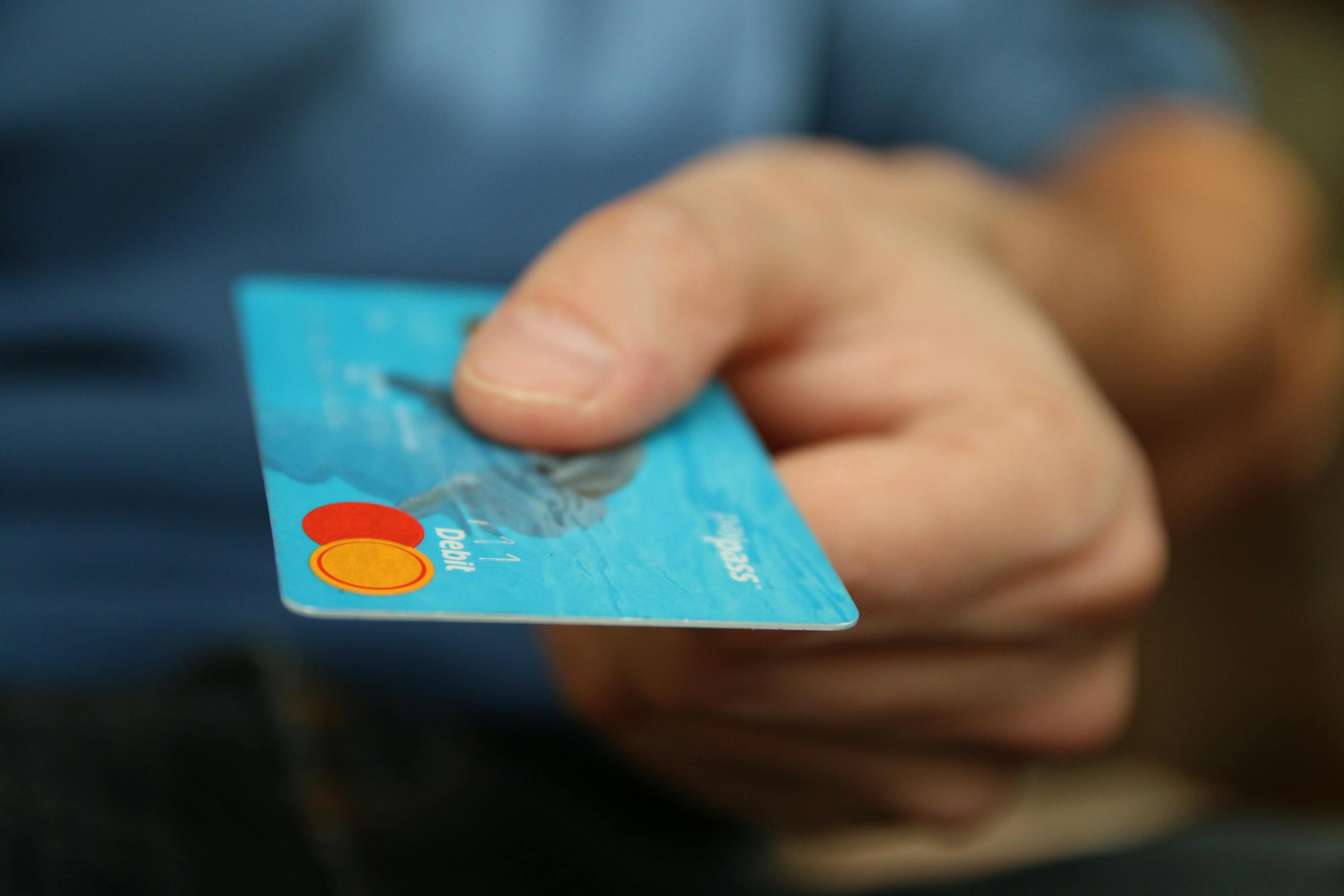
Our recommendations are built on rock-solid experience.
- We've reviewed 70+ digital finance apps and online banks
- We've made 100's of card transactions
- Our writers have been testing providers since 2013
Other Monito Guides and Reviews on Top Multi Currency Cards
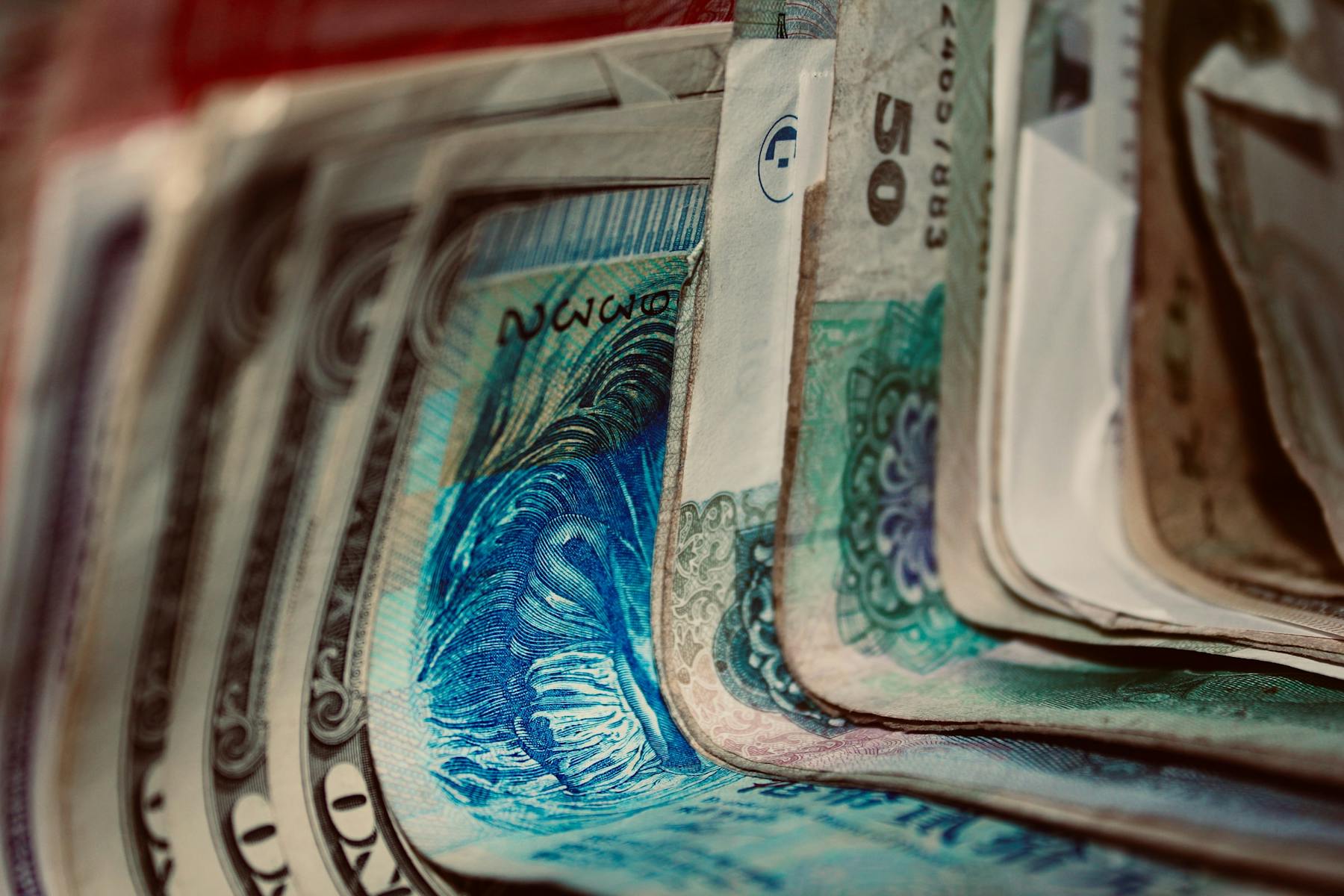
Why Trust Monito?
You’re probably all too familiar with the often outrageous cost of sending money abroad. After facing this frustration themselves back in 2013, co-founders François, Laurent, and Pascal launched a real-time comparison engine to compare the best money transfer services across the globe. Today, Monito’s award-winning comparisons, reviews, and guides are trusted by around 8 million people each year and our recommendations are backed by millions of pricing data points and dozens of expert tests — all allowing you to make the savviest decisions with confidence.
Monito is trusted by 15+ million users across the globe.
Monito's experts spend hours researching and testing services so that you don't have to.
Our recommendations are always unbiased and independent.
- Credit cards
- View all credit cards
- Banking guide
- Loans guide
- Insurance guide
- Personal finance
- View all personal finance
- Small business
- Small business guide
- View all taxes
You’re our first priority. Every time.
We believe everyone should be able to make financial decisions with confidence. And while our site doesn’t feature every company or financial product available on the market, we’re proud that the guidance we offer, the information we provide and the tools we create are objective, independent, straightforward — and free.
So how do we make money? Our partners compensate us. This may influence which products we review and write about (and where those products appear on the site), but it in no way affects our recommendations or advice, which are grounded in thousands of hours of research. Our partners cannot pay us to guarantee favorable reviews of their products or services. Here is a list of our partners .
Cash Back vs. Travel: How to Choose Credit Card Rewards

Many or all of the products featured here are from our partners who compensate us. This influences which products we write about and where and how the product appears on a page. However, this does not influence our evaluations. Our opinions are our own. Here is a list of our partners and here's how we make money .
Choosing a rewards credit card means picking a side in an ongoing debate: cash back or travel rewards?
Each has its advantages. Cash back is flexible and easy to redeem. Points or miles offer the possibility of a paid-for vacation and, depending on the circumstances, higher value for the rewards you earn. Some cards let you redeem rewards for cash or travel at the same value. But if you’re deciding between the two, it comes down to your lifestyle — and the effort you’re willing to put in.

» MORE: NerdWallet's best rewards credit cards
With a cash-back card , your rewards come as dollars, not points or miles that you have to figure out how to redeem. The easiest way to redeem cash back is for a credit on your statement; you may also be able to get a check or a direct deposit to a bank account.
Easy redemption but fewer perks
Because redeeming rewards takes no research and little effort, this option is perfect for someone who wants a low-maintenance wallet. If you're looking to finance a large purchase, many cash-back cards also come with generous introductory 0% APR promotions as well as bonus offers that can kick a couple hundred dollars back you right off the bat.
With a few exceptions, such as cards that pay extra-high rewards rates in certain categories, cash back cards don't usually charge annual fees. Because of that, however, they lack the kinds of perks (including lavish sign-up bonuses) that you'll typically find on travel rewards cards with a fee.
Choosing a card based on your spending
Since the main appeal of a cash-back card is earning money back for each purchase, you'll want to pick a card with a rewards structure that aligns with your spending. For instance:
People with big grocery bills would do well with the Blue Cash Preferred® Card from American Express . It earns a whopping 6% cash back on up to $6,000 a year in purchases at U.S. supermarkets (1% after that), in addition to terrific bonus rewards on select U.S. streaming subscriptions, at U.S. gas stations and on transit. It comes at a cost, though: $0 intro annual fee for the first year, then $95. Terms apply ( see rates and fees ).
Those who enjoy going out might want to consider the Capital One SavorOne Cash Rewards Credit Card , which earns 3% back on dining and entertainment, in addition to grocery stores.
Want the ultimate low-maintenance option? Choose a flat-rate credit card like the Wells Fargo Active Cash® Card , which earns 2% back on every purchase, no matter the category.
If these options don't quite fit what you're looking for, check out NerdWallet's best cash-back credit cards .
» SEE: Credit cards that earn 2% cash back or more on all purchases
Travel credit cards give you rewards in the form of points or miles, the value of which often depends on how you redeem them. Travel cards come in two main flavors — general purpose travel rewards cards and so-called co-branded cards, which bear the name of an airline or hotel chain.
The primary advantage with general-purpose travel cards is flexibility. You aren't locked into redeeming your rewards with a specific airline or hotel brand. You can usually use your points to book travel, or you can redeem them for credit against travel purchases you already made.
Unlike with airline or hotel cards, you don't usually run into restrictions on when you can use your points from general purpose travel cards. An airline might have "blackout dates" on which you can't redeem your miles for a free flight, for example. But with a general purpose travel card, what you're really doing is booking your travel on your credit card at the regular price and then using your rewards to offset the cost on your credit card bill. As far as the airline is concerned, you paid for the flight like anyone else.
Some of the most popular and most widely marketed credit cards are general purpose travel rewards cards. The Capital One Venture Rewards Credit Card , for example, gives you 2 miles per dollar on most purchases, while the Chase Sapphire Preferred® Card gives you up to 5 points per dollar depending on where you use it. Each allows you to redeem your rewards, or transfer them to airline or hotel partners. The both charge an annual fee, though. By contrast, the Bank of America® Travel Rewards credit card gives you 1.5 points per dollar on every purchase and has a $0 annual fee.
Co-branded travel cards don't offer as much flexibility, but they can provide perks that general purpose cards can't. Airline credit cards , for example, often let you check a bag for free when you use the airline's card to book travel. You might get priority boarding or even airport lounge access. A co-branded hotel card might entitle you to a free night each year, or room upgrades, or automatic elite status.
Outsized rewards through transfer partners
Many general purpose travel cards give you the option to transfer your rewards to specific airline and hotel rewards programs, which can give you even more bang for your buck, if you're willing to put in a little effort. A point can be worth more than 1 cent apiece in some circumstances.
Let's say you have the Capital One Venture Rewards Credit Card . You can use Capital One Miles earned on the card to book travel directly in the Capital One travel portal , usually for a value of 1 cent each. But transferring miles to travel partners could unlock a higher value.
For example, booking two nights at a Wyndham hotel in Newport, Rhode Island, for October 2022 cost $700.45, or 70,045 miles, through the Capital One travel portal (as of May 2022). But in this case, transferring the miles to Wyndham rather than booking through Capital One could be a better move. By transferring Capital One Miles to Wyndham (1 Capital One Mile = 1 Wyndham point), you could book that same hotel for the same two nights for a total of just 30,000 points. That boosts the value of your miles to 2.3 cents each.
That's not a small difference if you're trying to decide between a 2% cash-back card like the Wells Fargo Active Cash® Card and the Capital One Venture Rewards Credit Card , which earns 2 miles per dollar on most purchases. If you spent $2,000 a month, you'd earn roughly the same amount back with both cards per year: $480 or 48,000 miles, respectively.
But if you were able to redeem all of your Capital One Miles at 2 cents apiece, your rewards value jumps from $480 to $960, effectively giving you 4% back on all purchases.
Extra perks
Most travel credit cards come with an annual fee. But in exchange, you're more likely to find a card with valuable perks like a statement credit to cover the cost of TSA PreCheck , airport lounge access , and automatic status with certain hotels and rental car companies.
» MORE: NerdWallet's best travel rewards cards

Which is better?
When you're picking a card, be realistic about how you're going to use it. Assuming you don't plan on carrying a balance and don't need to worry about interest rates, go for a card that offers a high rewards rate and redemption options that complement your lifestyle.
A travel card is an excellent choice if you travel frequently and can take full advantage of the side perks. A cash-back card, though, is usually less expensive and comes with more versatile rewards. For many, that makes it a clear winner.
What's next?
It's totally OK if travel rewards aren't for you
Beginner's guide to points and miles
What are travel points worth and why do they matter?
How do cash-back credit cards work?
On a similar note...
Find the right credit card for you.
Whether you want to pay less interest or earn more rewards, the right card's out there. Just answer a few questions and we'll narrow the search for you.


Comparison of Forex Card vs Credit Card, Debit Card, and Cash
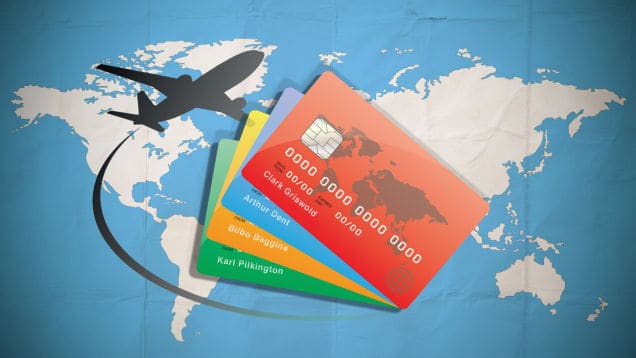
Image Source : moneymada.com
Getting a Prepaid travel card is claimed by industry experts to be the safer, better and cheaper option for travellers going abroad, especially for travellers on a budget. So how true is this claim?
An analysis by extravelmoney takes a look at the pros and cons of using a Prepaid forex travel card when compared to cash, debit & credit cards.
1. Comparison of Prepaid Travel Cards vs Cash

Advantages of Prepaid Travel Cards over Cash
Disadvantages of prepaid travel cards compared to cash, so prepaid travel card or cash when going overseas.
We recommend a mixture of both. The majority of your purchases and transactions abroad would be cashless in nature. Take 70% of your total expected expense in forex card and the rest 30% by cash. Here we explain The best strategy to adopt when carrying money abroad . Also, Take a look at our chart on the 7 major expenses of travellers abroad .

2. Comparison of Prepaid Travel Card vs Credit Card and Debit Card

Advantages of Prepaid Travel Cards over Credit Card and Debit Card
Disadvantages of prepaid travel cards compared to credit card and debit card, so prepaid travel card or credit card, debit card.
Looking at the pros and cons of prepaid travel cards and Credit/Debit cards, the answer is clear. You need them both. Perform the majority of your transactions abroad via forex cards and carry credit, debit card along as backup.
3. Comparison of Prepaid Travel Card vs Travellers Cheques

Advantages of Prepaid Travel Cards over Travellers Cheques
Disadvantages of prepaid travel cards compared to travellers cheques, so prepaid travel card or travellers cheques.
Go for a prepaid forex travel card through and through
To Summarize,
The advantages and disadvantages of Prepaid Travel Cards
Benefits of prepaid forex travel cards.
- Easy to apply for and get
- Load multiple foreign currencies in them and use abroad
- No currency conversion charges for shopping abroad by swiping forex cards
- Can replace and reissue card along with balance funds in it, in case of loss or theft
- The cheaper option, with better exchange rates compared to currency and other cards
- No credit facility, you can better manage your finances compared to credit card
- Protection measures like chip and pin enabled
- Locked in exchange rate, guaranteeing the same rate for funds in forex card even in case of fluctuations in the value of the currency in the forex market
Cons of Prepaid Forex Travel Cards
- Fees associated with forex cards like activation fee, ATM use abroad fee, inactivity charges and redemption fee when balance amount in the card is redeemed
- Long load times for reloaded funds to get credited to the prepaid travel card
- No credit facility which can leave you paralyzed if the funds in your card are over
- Not accepted in all places like in hotels abroad as security where only credit card details will work. Even in some developed countries, certain businesses may only accept cash and not a card
So what is the best way to carry money abroad?
The best way to carry money abroad would be to take a mixture of travel money options. Forex card for 60% of total expenditure, balance 40% in cash, Credit and debit cards as backup.
You can buy the best multi-currency prepaid travel cards for UK, Australia, USA, Europe and other countries from ExTravelMoney. Compare the travel cards offered by different banks and money changers like EbixCash, Cox & Kings, and get the cheapest prepaid travel card online with the best exchange rates!
Also Read: 7 Advantages of Forex Card and Its Benefits for Travellers
About The Author

Subhash Sivamani
Related posts.
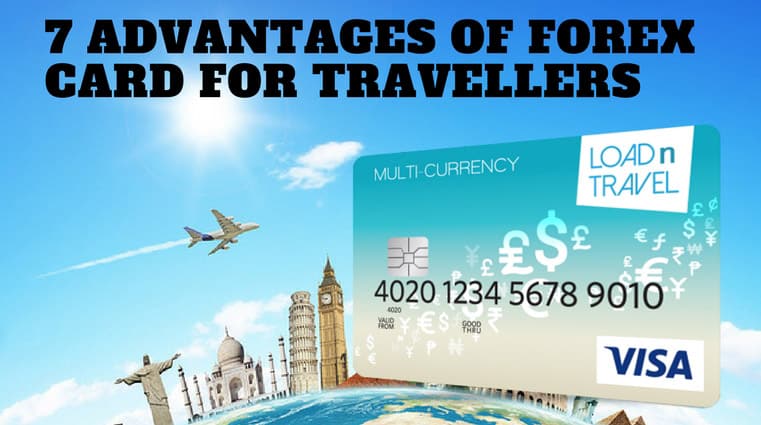
7 Advantages of Forex Card and Its Benefits for Travellers

8 Best Forex Cards in India For Students and Travellers
- Argentina
- Australia
- Brasil
- Canada
- Deutschland
- España
- France
- India
- Italia
- Magyarország
- Malaysia
- New Zealand
- Polska
- Portugal
- România
- Singapore
- United Kingdom
- United States
- 繁體中文 (香港)
Travel Card vs Cash

Home | Travel Card vs Cash
Oscar Murray
Learn the pros and cons of using a travel card compared to carrying currency in cash while you’re travelling.
Looking for foreign currency conversion ahead of your next overseas trip?
Whether your world travels are for work or pleasure, it’s important to plan ahead and do your research. Comparing the choices of converting your local money to the currency of the foreign countries on your travel itinerary can save you lots more than just headaches – you can save some serious money as well.
One main decision to make is the choice between taking a travel card or using travel money. Travel Money cards generally offer greater protection than old-fashioned cash, but can come with their own challenges.
Pros and cons of travel cards and cash for travel
The Currency Shop says:
- Both travel cards and cash have their pros and cons. One is not always the better than the other.
- Why not use both? A lot of travellers use the best features of cards and cash by taking some of each. That is, loading some money on a travel card for purchases at restaurants, hotels and taxis while also keeping some cash on hand for smaller purchases and tips.
- You’ll always get more for your money if you compare the exchange rates and fees when buying travel money.
Pros of Using Travel Money Cards on Your Next Overseas Trip
It’s easy to buy a Travel Money card before you leave Australia and in the currency of the destination you are planning to visit. Planning on visiting multiple countries? Consider sourcing a travel money car pre-loaded with each individual currency before you leave home.
Some travel money cards give you the option to load multiple currencies onto the one card.
Travel money cards are quite secure – and often issued to you in duplicate. If you lose one, or have it stolen, you have the second card already available for use, straight after you cancel the first card. The second card has its own unique PIN, as well as a different account number, to ensure security. For travellers who don’t have access to a credit or debit card, travel money cards can be an effective option.
Cons of using Travel Money Cards on Your Next Overseas Trip
- Some countries do not accept travel money cards widely, rendering them virtually useless. Unless you are in a big city – and usually a capital city – you may find problems accessing your cash using your card.
- Check with the card provider about the transaction fees associated with accessing your cash via ATMs and your travel money card. All travel money cards – no matter who issued it – will hit you with a fee for currency conversion if you buy something in a currency that is not loaded onto the card. The good news is that the fee is still often less than what you would pay for conversion at a foreign currency exchange provider in person.
And, for balance, here are some of the potential benefits and pitfalls of taking travel money with you overseas:
Pros of carrying cash on your overseas trip.
- The most obvious benefit of cash is the in-your-pocket convenience and immediacy. Depending on the countries you plan to visit on your next trip, you may find that not every stop along the way has the capacity to accept payment using cards. And for those situations, the comfort or reaching into your pocket for a wad of local currency gives you great peace of mind.
- Having cash also gives bargaining power to haggle a better price.
- Another plus about using travel money for your next trip? You don’t have to waste precious time from your busy schedule to traipse around hunting down the nearest ATM.
- Avoiding ATM fees every time you need to pay for something is yet another positive.
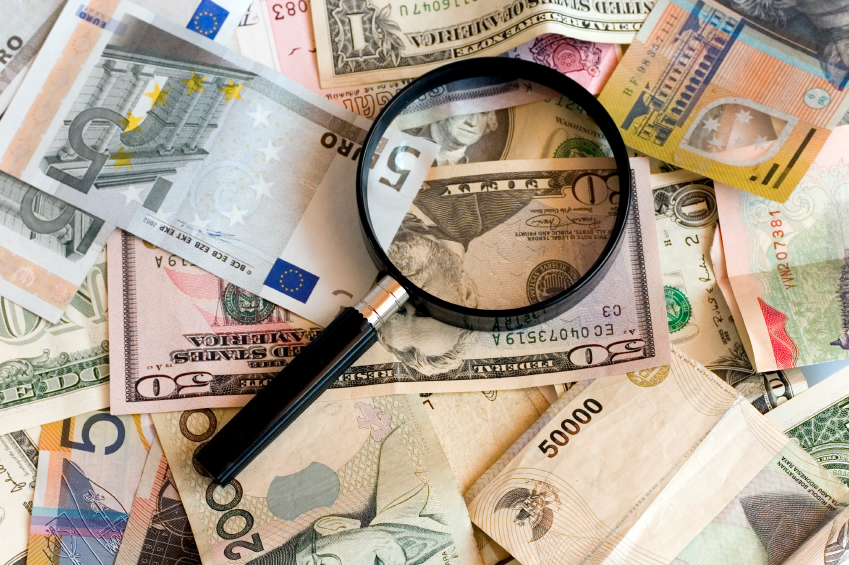
Cons of Carrying Cash on Your Overseas Trip
- Carrying money on your holiday or business trip may save you money in unwanted ATM and credit card transaction fees but it does come with its own risks – leaving you more prone to targeted robbery by locals who may know you are carrying large sums of money.
- It’s hard to make a claim for cash on your travel insurance. Without the clear proof of how much money you had with you, claiming what was stolen can make for a difficult conversation with your insurance provider. You may find that you are covered for replacement of cash on your insurance but the slow process you will need to go through can make settlement protracted and painful.
- Carrying a lot of cash safely can be cumbersome and stressful. Plus, if you visit multiple countries and plan to exchange Australian dollars at each new arrival, you may also find that low exchange rates available at local currency providers cost you lots each time you travel across a new border.
To learn more about the difference between choosing travel money cards and actual money to take on your next overseas holiday or international business trip, call our currency conversion experts at The Currency Shop .
Cash back vs. travel rewards: How to choose a credit card

Editor's Note
If you're new to credit card rewards, one of the first questions you'll need to answer for yourself is: Should I get a card that earns travel rewards or a card that earns cash back?
The good news is you can find reliable options among the top cash-back credit cards and the best travel credit cards . In the end, you may want both a cash back and a points card .
Below, we'll break down the pros and cons of different types of cards and their associated rewards programs. We'll dive into things like rewards value, welcome offers, redemption, ease of use and perks. Considering these options will help you choose the best card for you.
Your spending and goals
The number of credit card options is both the best and most challenging part of choosing a card. Before we dig into what different cards offer, you'll want to think about your own spending habits and goals .
First, take a look at where your money is going right now. Are you renovating a home and spending a large portion of your money at home improvement stores? Maybe you're traveling a lot for work or spending your weekends trying out all the new restaurants nearby. Whatever you're doing, you can find a card that will maximize your rewards in your highest spending categories.
Then, determine what you would like to get out of your credit card rewards. Do you want to use points and miles to visit family over the holidays or book a dream vacation? Or are you hoping to help cover the cost of a large upcoming expense?
These answers are unique to you, and determining them upfront will help you decide which options will work best for you.
Types of cards
Generally, we designate credit cards as either travel rewards cards or cash-back cards . The names are pretty self-explanatory: they are cards that either earn travel rewards or simple cash back.
However, some cards offer more flexibility and allow users to choose how they redeem their rewards. Cards that earn transferable points , such as American Express Membership Rewards or Chase Ultimate Rewards , allow the cardholder a variety of options for redeeming the points they earn. While some redemptions are more valuable than others (more on that below), it can be nice to have the option to change your redemption strategy in case your goals change in the future.
Welcome offers
What you earn on credit card spending is essential, but nothing beats a card's welcome bonus when it comes to accumulating rewards quickly. The first few months of card ownership are potentially the most valuable since these bonuses can be worth hundreds or even thousands of dollars.
Travel rewards cards almost always offer higher welcome bonuses than cash-back cards. For example, The Platinum Card® from American Express currently offers a welcome bonus of 80,000 Membership Rewards points, worth $1,600 (according to TPG calculations ).
However, a higher bonus on a travel rewards card usually comes with a higher spending requirement. In order to get the bonus on The Platinum Card, for instance, you'll need to spend $8,000 in the first six months of membership. (Terms apply.)

Cash-back cards, on the other hand, generally offer a much lower bonus but also require a much lower spend in order to receive it. For example, the Capital One Quicksilver Rewards Credit Card (see rates and fees) provides a one-time $200 bonus but only requires you to spend $500 on purchases within the first three months of opening your account to unlock the bonus.
Reward categories
When you consider a card's reward categories , it's helpful to identify where you spend the majority of your money.
While it makes sense that most travel rewards cards earn the most on travel purchases , you can find both travel rewards and cash-back card options that will reward you for everyday spending at places like supermarkets and gas stations .

The Chase Sapphire Reserve , for example, is a travel rewards card. Using it, you'll earn 3 points per dollar on all travel spending. Apart from travel, though, the card also earns 3 points per dollar on dining and 10 points per dollar on Lyft rides (through March 2025). Since TPG values Chase Ultimate Rewards Points at 2.05 cents each, you'll effectively earn a value of 6.2 cents per dollar spent on travel and dining, as well as a very lucrative return of 21 cents per dollar spent on Lyft rides.
But if travel isn't a big spending category for you, or if you want to earn your rewards in the form of cash back, there are some excellent cash-back cards with different reward category options.
The Blue Cash Preferred® Card from American Express, for example, gives you 6% cash back at U.S. supermarkets (on up to $6,000 per calendar year in purchases, then 1%) and 6% cash back on select U.S. streaming services (with no cap), 3% cash back at U.S. gas stations and transit, while giving 1% back on other purchases. That means for every dollar you spend at U.S. supermarkets, you'll earn 6 cents that can be applied to a statement credit.
An important element to consider as you make your credit card decision is whether a card has an annual-fee and, if so, whether it is worthwhile to pay
Travel rewards cards have a reputation for carrying higher annual fees, and sometimes for good reason: many premium travel rewards cards have annual fees of $350 or more. The welcome bonuses and perks of these cards generally offset the cost of the annual fee , but the cost itself may not be something you want to pay right now if you're on a tighter budget.
The good news is that there are plenty of lower and no annual fee travel rewards cards available.
The Chase Sapphire Preferred® Card , for example, has an annual fee of only $95 and still comes with a welcome bonus of 75,000 Chase Ultimate Rewards points after you spend $4,000 on purchases in the first three months from account opening. It also still earns you 2 points per dollar on travel, 3 points per dollar on dining, and 5 points per dollar on Lyft rides (through March 2025). With our 2.05-cent-per-point valuation , that's a lot of value for a relatively low annual fee.
Furthermore, the Capital One VentureOne Rewards Credit Card (see rates and fees ) has no annual fee and offers 20,000 bonus miles after spending $500 within the first three months from account opening. You also earn you 1.25 miles per dollar on every purchase.
While the perks aren't as abundant as the perks of cards with higher fees, these cards, along with other low and no-annual-fee travel cards, are a great way to earn travel rewards with lower out-of-pocket costs.
With cash-back cards , you'll find even more options if you want to avoid annual fees . Some of our favorite no annual fee cash back cards are the Citi Double Cash® Card (see rates and fees ) and the Chase Freedom Unlimited® . If you're looking at a cash-back card that does carry an annual fee, though, make sure your earning potential makes the fee worth it. An annual fee on a cash-back card can quickly eat into the rewards you'll earn with the card.
Big welcome bonuses and hefty annual fees tend to lead to valuable perks , which is a point in favor of points and miles cards. The Chase Sapphire Reserve , for instance, includes a $300 annual travel credit reimbursement and complimentary access to Priority Pass lounges .
Other card benefits to look out for include baggage insurance , primary car rental insurance and purchase protection .
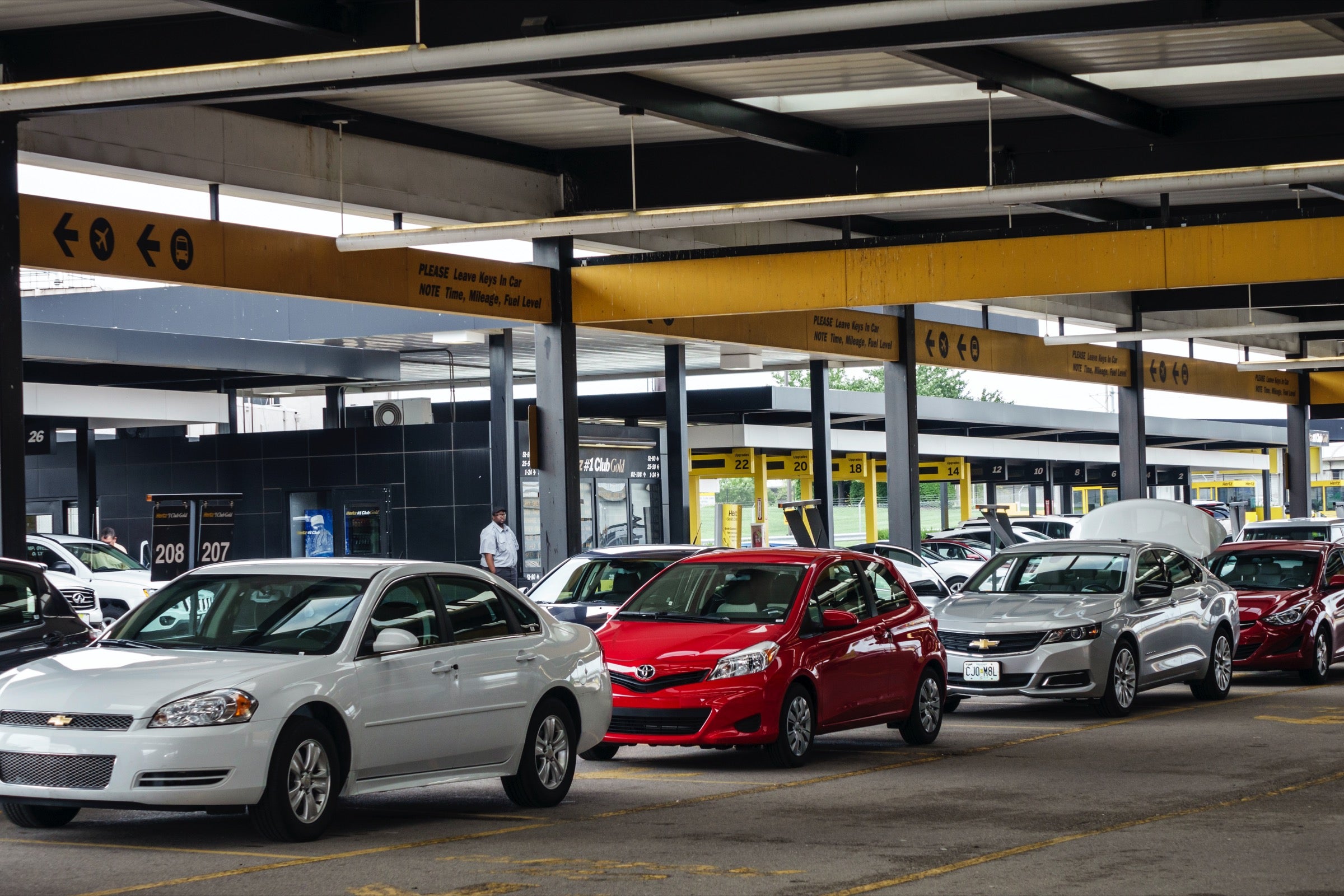
Cash-back cards tend to have fewer benefits, but you should still be able to find a card that offers some industry-standard benefits, like these:
- Purchase protection: Covers your new purchases for a limited amount of time against damage or theft up to a certain amount per claim and per account.
- Extended warranty: Extends the period of a U.S. manufacturer's warranty (typically up to a year) on eligible warranties (of up to three to five years typically).
- Zero Liability: You won't be held responsible for unauthorized charges made with your card or account information. Federal law generally limits your liability to $50.
Ease of using rewards
While many travel rewards cards offer excellent bonus categories and perks, keeping up with everything takes effort. Especially if you end up with multiple cards , it can be easy to get overwhelmed as you figure out which cards to use for different purchases to maximize your benefits. Then, once you have your points and miles in hand, you'll need to figure out how you want to redeem them . If you're able and willing to put some work into your strategy, you'll be able to get some excellent value with these rewards.
However, not everyone wants or is able to put much energy into maximizing their credit card rewards. If that's you, a cash-back card may be a better choice.
If you're looking for simplicity, cash-back cards are hard to beat. The most work you'll likely have to put in for one is activating the quarterly 5% bonus categories on the Chase Freedom Flex℠ .
But if you don't even want to deal with rotating categories, you can opt for a card like the Citi Double Cash , which pays 2% cash back (1% cash back on all purchases and another 1% back when you repay on time) on all purchases. Paying on time and in full (one of TPG's ten credit card commandments ) means you'll enjoy an almost effortless 2% cash-back reward on all purchases with this card. That's a pretty good deal for everyday spending and very little effort.
Redeeming points for cash back or travel
Cash-back cards win again for simplicity on redemption since one cash-back percentage point equals 1 cent per dollar spent. But when it comes to value, points and miles cards almost always come out on top.
When redeeming points and miles, 1 point or mile is almost always worth more than 1 cent. Furthermore, a point is often not a fixed-rate commodity. The value of currencies like Amex Membership Rewards , Chase Ultimate Rewards and Citi ThankYou points are hard to pin down since you can transfer these rewards to various travel partners and get much more value for a first-class flight.
There's certainly a learning curve, but referencing our valuations is an excellent way to see if you're getting a good bang for your buck, especially if you're considering traveling soon.
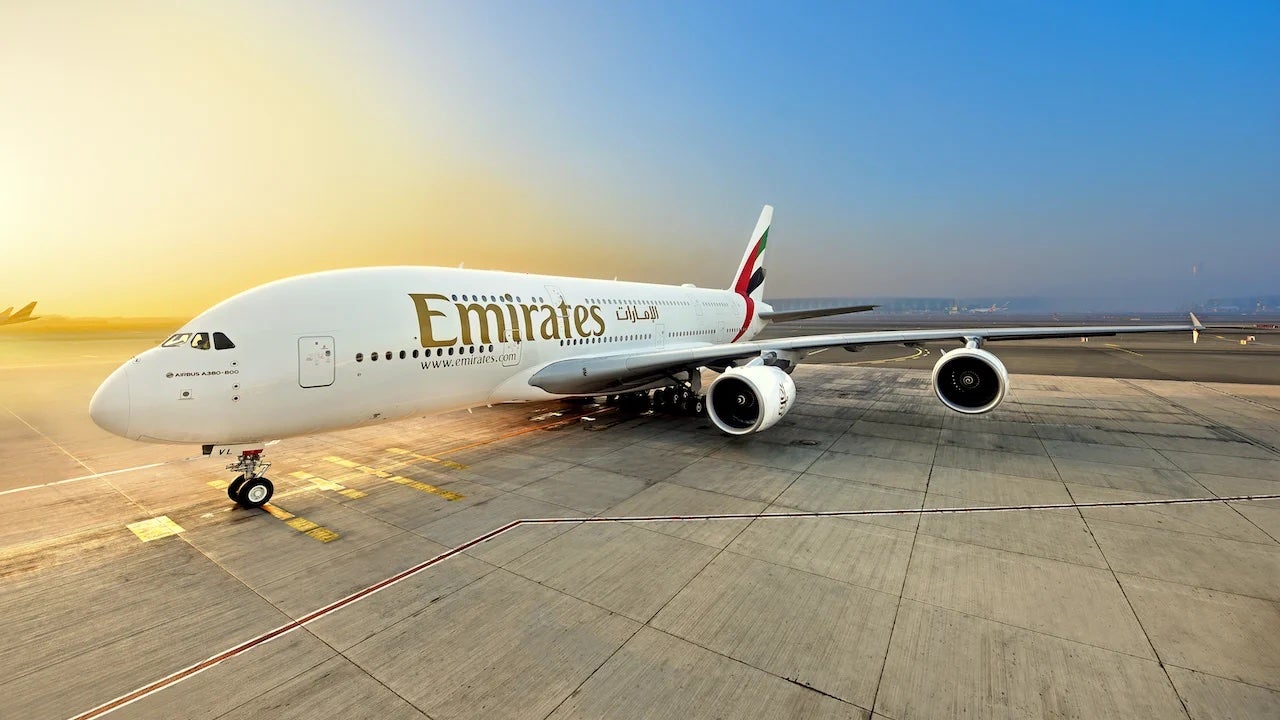
Is it better to redeem points for cash or travel?
Generally speaking, it's better to redeem your points for travel. You'll likely get more value from a travel redemption than cash back for the same number of points. It's best to aim to get at least 1.5 cents value from each point .
Is it better to get cash back or gift cards?
It depends. It's hard to beat the simplicity of a cash-back redemption since most cards offer this redemption in the form of a statement credit. However, sometimes gift card redemptions are offered at a higher value than cash back. If you can find a good deal on a gift card you'll use, a gift card redemption may make sense.
Is there a downside to cash back?
Cashback is great if cash flow is what you need or want right now or if you don't have the energy to keep up with a more complex credit card strategy. However, you'll generally get more value for travel redemptions by using a rewards credit card rather than a cash back card.
Are airline miles worth more than cash back?
Yes. Cashback is usually valued at 1% or 1 cent, whereas most airline miles are worth more than 1 cent . However, some airlines like Hawaiian Airlines and Spirit Airlines have poorly-valued miles, so cash back is better in these cases.
Bottom Line
If your top priority is getting the most value out of a credit card — no matter the blood, sweat and tears required — you should get a travel rewards card and maybe a premium one at that. You'll get far more value out of one of these cards from the bonus, the points, the perks and the redemption options than you'll get from a cash-back card.
But not everyone has the time or inclination to put this much effort into tracking spending and returns, which is where cash-back cards come in. There's nothing wrong with either perspective.
The only major misstep you can take — if you pay your credit cards off every month — is not to take advantage of the free money issuers will throw at you in the form of welcome offers.
Additional reporting by Danyal Ahmed
- Join CHOICE
Travel money cards with the lowest fees
We look at seven travel money cards from the big banks and airlines..
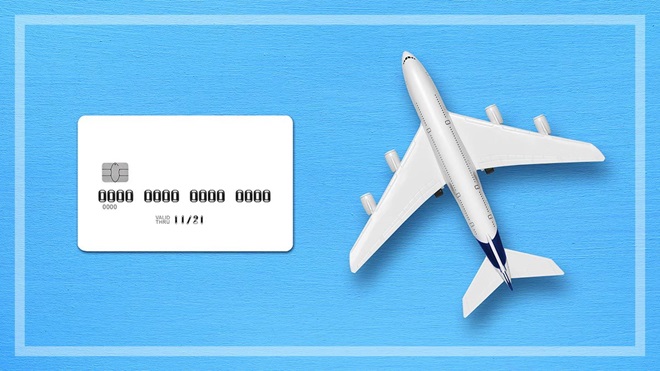
Prepaid travel money cards are offered by major banks, airlines and foreign exchange retailers like Travelex. Before travelling overseas, you load money into the card account, which locks in the exchange rate for foreign currencies at that time.
You can then use the card for purchases and cash withdrawals just like a debit or credit card, usually wherever Visa and Mastercard are accepted.
You can reload money on-the-go via an app or website, and if the card is lost or stolen, it can be replaced (usually at no cost to you).
Prepaid travel money cards also give you assurance that you're not handing the details of your everyday banking account to merchants you're not familiar with, and they provide easy access to cash when you want some, says Peter Marshall, head of research at money comparison website Mozo .
CHOICE tip: Travel money cards are best for longer trips. They're usually not worth your while if you're only taking a short trip, as some have closure, cash out and inactivity fees.
Travel money card fees
A major difference between prepaid travel cards and debit or credit cards is their fees. Some costs aren't immediately apparent, such as hefty margins built into the exchange rates.
And although fees have come down since we looked at these cards two years ago, you still need to watch out for:
- fees to load the card – either a percentage of the total or a flat fee
- ATM withdrawal fees
- a cross currency fee or margin when you use the card in a currency you haven't preloaded
- further fees if you close the account or haven't used the card for a period of time.
Travel money card with the lowest fees and best exchange rate
Westpac worldwide wallet.
Westpac closed its Global Currency Card in July 2021 and offers its new card in partnership with Mastercard. It's also available from Bank of Melbourne and BankSA.
Currencies: AUD, USD, NZD, EUR, GBP, SGD, THB, JPY, HKD, CAD, ZAR.
Key features:
- No loading, reloading, closing or inactivity fees.
- Free to use it in network ATMs in Australia and partner ATMs overseas in a range of countries including the UK, US and New Zealand.
- A charge applies at non-Westpac and non-partner ATMs in Australia and overseas.
- Best exchange rates for the US dollar, the Euro and GBP in our comparison.*
- The only card that lets you preload the South African rand.
Other travel money cards
Next to the Westpac Worldwide Wallet, there are six other travel money cards available.
Australia Post Travel Platinum Mastercard
Available online or at post offices.
Currencies : AUD, USD, NZD, EUR, GBP, SGD, THB, JPY, HKD, CAD, AED.
- Fee to reload the card via BPay, debit card or instore, but free via online bank transfer.
- Closure fee.
- Fees for ATM withdrawals in Australia and overseas.
Cash Passport Platinum Mastercard
It's issued by Heritage Bank and is available online and from a number of smaller banks and credit unions (like Bendigo Bank and Bank of Queensland) as well as travel agents.
- Fee to reload with a debit card or instore, but free via BPay.
CommBank Travel Money Card
CommBank Travel Money Card (Visa)
As NAB and ANZ have closed their travel money cards, this is the only other travel money card available from a major bank. This card has the largest variety of currencies that can be preloaded.
Currencies : AUD, USD, NZD, EUR, GBP, SGD, THB, JPY, HKD, CAD, AED, VND, CNY.
- Fee if you make a purchase with currencies not preloaded.
- Fee for withdrawals at overseas ATMs.
Qantas Travel Money Card
Qantas Travel Money Card (Mastercard)
The only travel money card offering from an airline. It can be added as a feature to your Qantas Frequent Flyer card, so you don't need a dedicated card, and you can earn points using it.
- Free to reload via bank transfer or BPay, but there's a reload fee if using debit card.
Travelex Money Card
Travelex Money Card (Mastercard)
Travelex is an international foreign exchange retailer. In Australia, it operates more than 140 stores at major airports and shopping centres, across CBDs and in the suburbs. It was the card with the best exchange rate for New Zealand dollars.*
Currencies : AUD, USD, NZD, EUR, GBP, SGD, THB, JPY, HKD, CAD.
Fees :
- Load fee instore, but free via Travelex website or app.
- Reload fee instore or via BPay, but free via Travelex website or app.
- Closure fee and monthly inactivity fee (if not used for 12 months).
Travel Money Oz Currency Pass
Travel Money Oz Currency Pass (Mastercard)
The Travel Money Group is owned by Flight Centre and is a foreign exchange retailer.
- Reloading the card via an online bank transfer or instore is free, but there's a fee if you reload via BPay, debit card or credit card.
- Cash out (closure) fee.
Travel money card tips
- Make sure the card allows the currencies you'll need, and also consider stopovers. For example, the South African rand is only supported by the Westpac card.
- Try to load your card with the right currencies and amounts on days with good exchange rates.
- Make sure you know how to reload your card if you run out of funds while overseas.
- It may be more convenient to choose a card that has an app that can be linked to your bank account.
- Avoid loading more money than you'll need as there may be fees and exchange rate margins to get the unused money back.
- Remember to cancel the card once you're finished your trip, especially if it has inactivity fees.
- Be mindful that you still may need a credit card, as travel money cards may not be accepted as security for hotels and car rental agencies.
Stock images: Getty, unless otherwise stated.
Join the conversation
To share your thoughts or ask a question, visit the CHOICE Community forum.
Travel Card or Cash - What’s Better When Travelling Abroad?
Organised your flights and accommodation but still unsure what to do about your much-needed spending money we’ve outlined the pros and cons of travelling with a travel card or cash to help you decide when heading off on your next overseas trip., the best way to take money overseas, travel cards, get your money ready for your next trip.
With pros and cons for both options, why not take a travel card and cash overseas to give you the best of both worlds when travelling. Enjoy the benefits and peace of mind that come with a travel card, while still having some foreign currency to spend if needed!

Travelex Info
Join the conversation, customer support.

Editorial note: We may not cover every product in this category. For more information, see our Editorial guidelines .
Best travel money cards in 2024.
Travel money cards are essential when travelling overseas.
They allow you to easily make payments whilst travelling overseas. They make paying easier for shops, restaurants, hotels and ATMs.Travel money cards work in a similar way to ATM cards. They use a pin when you purchase goods or services overseas.
In this guide, we have compared travel money cards to help you make the best selection for your next trip.

Best Travel Money Cards:
- Wise Travel Card Best Exchange Rates
- Revolut Best for Low Fees
- Travelex Money Card Best All Rounder
- Bankwest Breeze Platinum Best Travel Credit Card
- Pelikin Student Traveller Card Best Student Card
- HSBC Everyday Global Travel Card Best Travel Card by Bank
- Qantas Travel Money Card Best Reward Benefits
Wise Travel Card - Great Exchange Rates
- 40+ currencies available
- Best exchange rates globally
- One of the lowest conversion fee on the market
- No international transaction fees
- No annual or monthly fees
- Extremely low costs to send money overseas
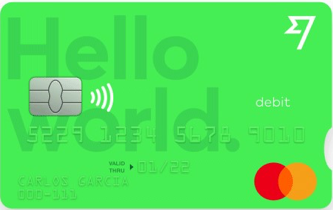
Wise Travel Card
- Cross currency conversion fees are between 0.24–3.69%. AUD to USD, EUR or GBP was 0.42%, which is one of the lowest on the market
- Free cash withdrawals up to $350 every 30 days. However after that, Wise charge a fixed fee of $1.50 per transaction + 1.75%
- Daily ATM withdrawal is $2,700
- Issue up to 3 virtual cards for temporary usage
- It takes between 7 to 14 business days to receive your card
- Can be used wherever MasterCard is accepted
The Wise Travel Card is great for frequent travellers as it offers over 40 currencies at the inter-market exchange rate, which is the cheapest rate globally. In addition you can buy goods online from overseas with no transaction fee plus get the best exchange rate. However if you use ATMs frequently this is not the card to use due to the fees. Finally Wise Travel Card lets you transfer money to an overseas bank account with extremely low fees and the best exchange rate.
Our Wise Travel Card Review
Revolut - Low Fees
- 30+ currencies available
- One of the best exchange rates globally
- No annual or monthly fees for standard membership
- No initial card fee
- Instant access to a range of cryptocurrencies
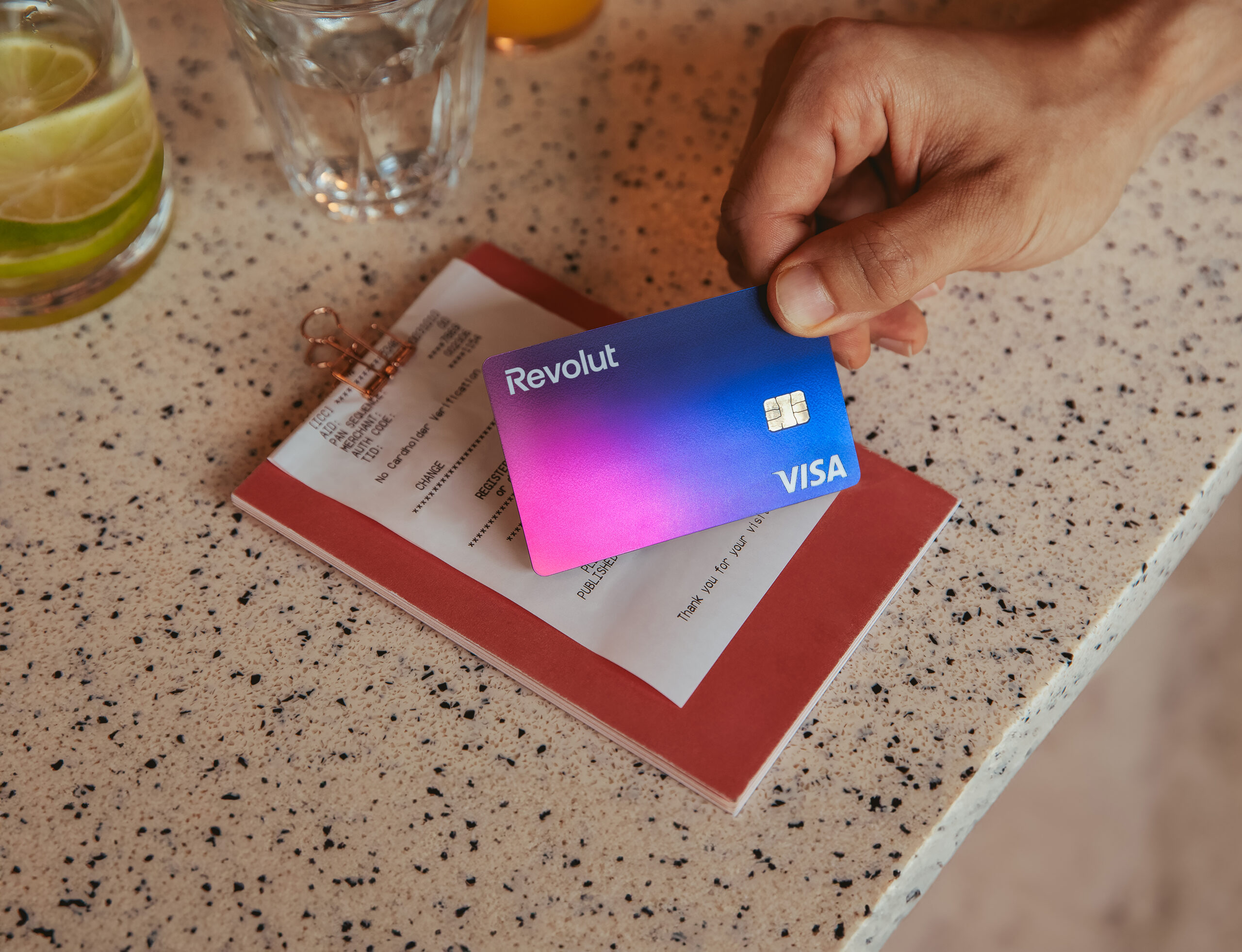
Read our Revolut Card Review
Revolut Travel Card
- No fee ATM withdrawals up to A$350, or 5 ATM withdrawals, whichever comes first, per rolling 30 day period and 2% of withdrawal amount (minimum charge of A$1.50) after that
- Exchanging currency on the weekend can incur a 1% mark-up fee
- Fees on international money transfers were introduced in April 2021.
- Can be used wherever Visa is accepted
The Revolut Travel Card is a decent option for those who travel a lot as it offers over 30 currencies at a great exchange rate, which is the cheapest rate globally. However if you exchange currency on the weekend you can incur a one-percent mark-up fee. In addition they have introduced fees for international transfers. Finally if you use ATMs frequently this is not the card to use due to the fees.
Travelex Money Card - Best All Rounder
Best features.
- Unlimited free ATM withdrawals
- 24/7 Emergency Assistance
- Initial and replacement card are free
- Lock in up to 10 currencies
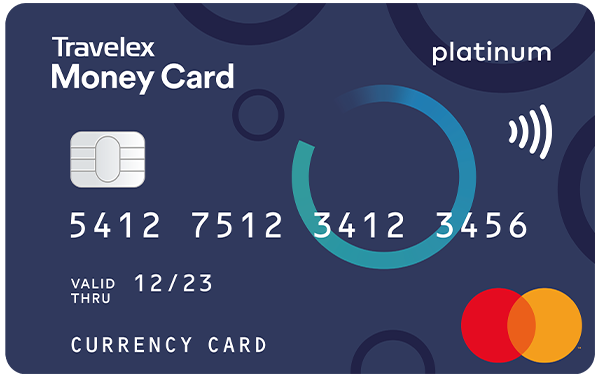
Read our Travelex Travel Card Review
Travelex Money Card
- Minimum load of $100 and maximum load of $100,000
- Can be used wherever Mastercard is accepted
- Fees include a $10 closure fee, $5 for an additional card and $4 inactivity monthly fee.
- While Travelex don't charge ATM fees, some ATM operators may charge their own fees.
- Currencies that can be loaded are AU$, US$, EU€, GB£, NZ$, TH฿, CA$, HK$, JP¥, SG$
- If your card is lost or stolen you can access cash in your account through Moneygram or Western Union agents, with no charge
- Boingo hotspots offer free wifi and you can look at their number of free hotspots per country on this map
The Travelex Card is a good all rounder.
You can use it to take money out of the ATM, for merchant purchases like restaurants and even for online shopping in foreign currency. While the exchange rates aren't as good as the Wise or Revolut Card abroad , the support network if the card is lost or stolen is very good.
Bankwest Breeze Platinum Credit Card - Lowest Interest Rate
- Lowest interest rate at 9.90%
- No international transaction fees on purchases
- 0% p.a. on purchases and balance transfers for the first 15 months
- Up to 55 days interest free on purchases
- Low annual fee
- Complimentary international travel insurance
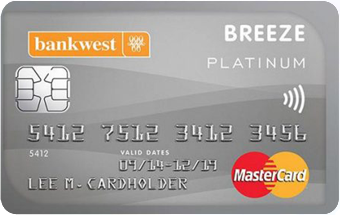
Bankwest Breeze Platinum Credit Card
- Free annual fee first year, then $69 annual fee
- 55 interest free days
- Free international travel insurance that includes the basics but does not cover cancellation costs, pre existing conditions and travellers over 80
- $6,000 minimum credit card
- 0% p.a. on purchases and balance transfers for the first 15 months, then reverts to 9.90%
- 21.99% interest rate on purchases and cash advances
- Cash advance fee of the higher of $4 or 2% of cash advance
The Bankwest Breeze Platinum is a great no frills credit card that offers ‘no foreign transaction fees’ and the lowest interest rate on the market, at 9.90%. These two factors alone will save you hundreds of dollars when travelling overseas.
In addition it has a low annual fee and complimentary international travel insurance. Finally for its price point it is a great value credit card that will be accepted most places around the world.
HSBC Everyday Global Debit Card
- No initial card or closure fees
- No monthly or account fees
- No international ATM fees
- No cross currency conversion fees
- Lock in very competitive exchange rates before travel
- No maximum balance
- Earn 2% cashback
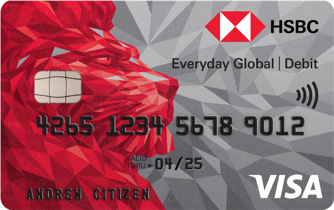
- 10 Currencies can be loaded are AUD, USD, GBP, EUR, HKD, CAD, JPY, NZD, SGD, CNY (currency restrictions apply to CNY)
- Awarded 5 gold stars by CANSTAR in 2021 for Outstanding Value
- Very competitive exchange rates on all currencies when you have currencies already loaded on your card
- ATMs within Australia need to be HSBC and overseas they need to display a VISA or VISA Plus logo, not be be charged fees
- Earn 2% cash back when you tap and pay with Visa pay wave, Apple Pay or Google Pay for purchases under $100. With a maximum of $50 cash back per month. In addition you need to deposit $2,000 or more into your Everyday Global Account each calendar month.
- Daily maximum ATM withdrawal is $2,000
- Fraud protection covered by Visa Zero Liability
The HSBC Everyday Global Debit Card is a good option to take travelling and to spend money in Australia with no international transaction fees, international ATM fees and monthly fees. In addition there is no maximum balance on currencies held and a 2% cash back incentive when you tap and pay under $100.
Finally it is one of the only travel cards that offers Chinese Yuan. To avoid ATM fees you need to find HSBC branches in Australia and only use ATMs overseas with a VISA or VISA Plus logo.
Best Student Card
Pelikin student traveller card.
- Use promo code SMONEY10 for a $10 discount
- Up to 15% off international flights
- A globally accepted virtual student ID card
- 2% cash back on food & drinks, transport and accommodation
- Over 150,000 discounts worldwide

- $30 for 12 months
- 20+ currencies available
- Split bills, pay and get paid instantly
Pelikin is one of the only travel cards in Australia specifically for students. While it has a small annual fee, the range of discounts and offers more than make up for it.
The app is relatively easy to use and card arrives in under a week.
Best Rewards Card
Qantas travel money card.
- No monthly fees, purchase fees and currency conversion fees
- No load fees if you pay by bank transfer or BPay
- Locked in exchange rates: 4%+ margin on exchange rates
- Earn 1.5 Qantas points for every AU$1 spent in foreign currency
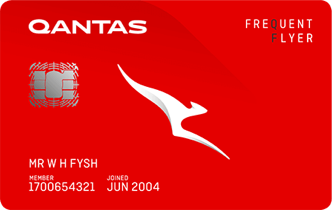
- 10 currencies offered USD, GBP, EUR, THB, NZD, SGD, HKD, CAD, JPY, AED
- Free Australia ATM withdrawals
- 0.5% fee debit card reload fee
- ATM fees overseas (USD 1.95; GBP 1.25; EUR 1.50; THB 70; NZD 2.50; SGD 2.50; HKD 15.00; CAD 2.00; JPY 160; AED 6.50)
- Minload of $50 and max of $20,000
- Available to 16 year olds, has a lower age restriction than most credit cards (18 year olds)
Qantas Travel card is a great option to spend foreign currency overseas if you are already a loyal Qantas customer and use your frequent flyer points regularly on flights, accommodation or gifts. The fees are low, the exchange rate is average however the ATM fees are expensive and will easily add up.
Other popular travel money cards
Aside of the Top 5 travel money cards, there are many more options to consider. These include well known brands such as the Commonwealth Bank and Travelex and less known services like Up Bank and Revolut.
Here is a rundown of their best features, fees and available currencies:
- 13 currencies available, including Vietnamese Dong and Chinese Yuan
- No issue fee, load fees, closure and card replacement fees
- Additional card offered
- Can be accessed through Commonwealth Bank app
Commonwealth Bank Travel Money Card
- $3.50 fee at ATMs overseas
- 13 currencies offered USD, GBP, EUR, THB , NZD, SGD, HKD, CAD, JPY, AED, AUD, VND & CNY
- Minload of $1 and max of $100,000
- Available to 14 year olds, has a lower age restriction than most credit cards (18 year olds)
- When you use your card for a purchase or withdrawal in a currency that is not loaded, or when they automatically transfer funds between the currencies on your card to enable the completion of the transaction at the Visa retail exchange rate plus 4%
- To transfer money between currencies or a transaction account, it will be at the bank rate which is normally 4% above the market value
The Commonwealth Bank travel money card is great if you are already a Commonwealth bank customer who banks online and knows exactly how much money in each country you want to spend. However if you need to transfer between currencies or make a purchase in a currency you don't have funds loaded, then you can get an additional expensive charge. Watch how many withdrawals at ATMs you make as well to keep the costs down.
- Exchange rates most competitive for USD, GBP and THB
- No fee on initial card or load (not BPay)
- No fee on reloads via bank transfers
- No monthly or inactivity fees
- Card is valid for 5 years
Travel Money Oz Currency Pass
- 1.1% reloading fee via Travel Money Oz Login or with debit or credit card
- 1% reloading fee for BPay
- $10 closure fee and replacement card fee
- 2.95% on withdrawals from Australian ATMs is expensive
- Roughly $3.50 on withdrawals from overseas ATMs is expensive.
- $3.99 + 5.95% fee on cross currency transactions
- 10 Currencies can be loaded are USD, EUR, GBP, NZD, CAD, HKD, JPY, SGD, THB & AUD
- Exchange rates for SGD and CAD are the least competitive
- Minload of $20 and max of $10,000
- Only 1 card per account
- According to the website they won't take online orders if you are departing within 14 days as the card can take up to 2 weeks for delivery.
The Travel Money Oz travel money card seems to be an outdated version of the Travelex or Australia Post travel card as it does not offer Global Emergency Assistance or Boingo hotspots. However exchange rates and fees are similar to Travelex, so if you are travelling to the US, UK or Thailand, this is a great card to pay for accommodation and things in shops. We would avoid using it at any ATM, to save costs.
- No ATM fees in Australia or internationally
- No minimum monthly deposit
- No account keeping fees
- Can be used in Australia as an EFTPOS card
- Available to 14 year olds and older
Macquarie Travel Card
- $2,000 daily limit for ATM withdrawals
- Simple and easy to work out costs for account
- Exchange rates are MasterCard exchange rates, which are normally 4%+ market rate.
- 90-day theft and damage protection on eligible purchases and stolen wallet protection up to $500
- Can be used in Australia to buy goods overseas and not pay international transaction fees
- Get discounts of up to 10% on eGift cards to use at over 50 leading retailers
The Macquarie Travel Card is a very good option to take overseas for ATM withdrawals as they are all free. In addition in Australia you can buy goods online and not pay an international transaction fee. Furthermore you can use the card like a normal debit card in Australia with no hefty fees or monthly minimum deposits. However the exchange rate is the MasterCard rate which is normally 4%+ above the market rate. Finally we would recommend this card for cash withdrawals at ATMs internationally but not paying for accommodation due to the added margin on the MasterCard exchange rate.
- Cheapest way to send money overseas through a bank
- UI and UX better than traditional banks making it super easy to use
- Competitive savings interest rate
Up Bank Travel Card
- Backed by Bendigo Bank and Adelaide Bank and partnered with Wise so it has financial backing and access to the cheapest exchange rates to send money overseas
- Nifty online tools to help you track spending, budget and save. These include a detailed transaction history often including a company logo, when you paid down to the minute and the suburb where the transaction was made. In addition it has a ‘Regulars feature that detects regular billers and estimate of upcoming bills so you get a heads-up before they are due
- Good savings account interest rates of 1.85% (0.10% base rate plus 1.75% bonus). Bonus interest is easily unlocked after making five successful card or digital wallet purchases each month
The Up Bank Travel Card is aimed at younger markets who are looking to save on bank costs and receive online tools to help them budget and save for their goals. It is also able to be used overseas at any ATM without fees, no international fees and is the cheapest way to send money overseas through a bank due to their partnership with Wise (the largest money transfer company in the world). In addition the exchange rates are Mastercard rates which are normally 4% above interest rates. Finally, while this card is very useful domestically and for ATMs overseas we would not recommend it for big ticket items overseas as it is an expensive card to use.
- No foreign transaction fees
- No fee on initial card, load, unload or inactivity fees
- No cross currency transactions fees
- Lock in exchange rates before you leave
- Exchange rates most competitive for USD, GBP, EUR and CAD and JPY
- No ATM fee at 50,000 Global Alliance ATMs worldwide
- Free additional card
- Flight delay pass
Westpac Travel Money Card
- 11 Currencies can be loaded are USD, EUR, GBP, NZD, CAD, HKD, JPY, SGD, THB, AUD & ZAR
- $2,000 maximum limit on ATM withdrawals overseas within 24 hours
- $50,000 maximum limit on currencies loaded on to travel card
- $3 roughly for ATMs that are not within the Non Westpac Global Alliance
- If you run out of one currency on the card, you can pay with other currencies without the expensive cross currency transaction fee
- No foreign transaction fees, initial card, load, unload or inactivity fees
- According to the Westpac it can take upto 8 business days to receive the travel card
- Secure from fraudulent transactions with Mastercard Zero Liability protection
- 2 cards per account for free
The Westpac Travel Card is a no frills handy travel card with very low fees, no foreign transaction fees, access to some free ATMs worldwide and competitive exchange rates, especially on USD, EUR, GBP, CAD and JPY. In addition it has the South African Rand (ZAR) which is not common in prepaid travel cards. Finally it has access to a flight delay pass in case your flights are delayed and you need to access airport lounges.
- Linked to ANZ Rewards program
- 7 types of insurance for free
- 55 days interest free
- Good security on card purchases
ANZ Travel Adventure Card
- 20.24% interest on purchases and cash advances
- $120 annual fee
- No international transaction fees in person or online
- Offer 7 types of insurance for free
- ANZ Reward points can be used to buy gift cards, swap for Virgin or Singapore airline points or cash into your account.
- Earn 1.5 Reward points per $1 spent on eligible purchases up to $2,000 per statement period
- ATM fees at non ANZ ATMs
- Minimum credit of $6,000
If you utilize rewards points then the ANZ Travel Adventure Card might be suitable for you. Reward points can be used to buy a wide range of gift cards, swap for Virgin or Singapore airline points or cash into your account. In addition no international transaction fees are charged for purchases online or whilst you travel overseas. Finally this card is not recommended for cash withdrawals as the interest rate of 20.24% will eat up any savings.
- No ATM fees
- Can be used in Australia with no additional costs
- No fees for paying via bank transfer or Bpay
- Transfer limits can be set by user
ING Orange Everyday Account Debit Card
- As long as you you deposit at least $1000 and make at least 5 payments each month ING will waive international transaction fees and refund overseas ATM withdrawal fees
- Can be used in all countries
- Works with Apple Pay and Google Pay
- Visa currency conversion rates apply, which are normally 4% above market
The ING Orange Everyday Account Debit Card is a good card for most Australians travelling overseas for ATM access, with no fees. It also allows you to to buy goods online without an international transaction fee.
Furthermore you can use it in Australia for free and there are no fees to get your initial card, for account keeping or to top up your card. A word of caution however, if you travel overseas for longer than 1 month, you still need to deposit at least $1,000 and make at least 5 payments each month to get the rebates.
- Initial card and replacement cards are free
- Increased protection with Mastercard Zero Liability
- Access to cash from your account through the Global Emergency Assistance, if your card is lost or stolen
Australia Post Travel Money Card - Platinum Mastercard
- 1.1% Admin fee for instore loads, including initial load
- $5 fee for reloads via debit bank card
- $10 closure fee
- $3.50 on withdrawals from overseas ATM is expensive
- Currencies that can be loaded are USD, EUR, GBP, NZD, THB, CAD, HKD, JPY, SGD , AED and AUD
- Minload of $100 and max of $100,000
- If your card is lost or stolen you can access cash that is in your account through Moneygram or Western Union agents, with no charge
- Boingo hotspots offer the free wifi and you can look at their number of free hotspots per country on this map
The Australia Post travel money card is a popular option for Australian travellers due to the convenience of stores. However we would recommend the Australia Post travel money card for paying in shops or accommodation as it is costly to withdraw cash from ATMS. As the Australia Post travel money card is fee heavy we recommend not making withdrawals at ATMs or making cross currency transactions to keep additional fees down.
- Up to 11 currencies available
- Manage your account and card online
- 24/7 global assistance
- Access to emergency cash
- Free additional card when ordered at time of purchase
- Can be used at millions of locations worldwide – wherever Mastercard purchase symbol is displayed
Greater Bank Cash Passport Platinum Mastercard
- $5 fee for reloads via debit bank card, FREE reloads via BPAY
- Admin fee of up to the greater of 1.1% of the load/reload amount or $15 for in-store purchases
- Debit card load fee 0.5% of the amount loaded, per Debit Card Load transaction
- Domestic ATM fee 2.95% of value Withdrawn
- International ATM fee USD 2.50, EUR2.50, GBP 2.00,NZD 3.50, THB80.00, CAD 3.50,HKD 18.00, JPY260.00, SGD3.50, AED 10.00, AUD 3.50
- Minimum load of AUD100 and a Maximum of AUD100,000
The Cash Passport is one of the most popular travel cards in the Australian market. With Greater Bank, you can purchase it online and at one of their branches, then download the app or use the website to manage your card. While the card may be useful for international purchases, be mindful when using an ATM both locally or overseas as the fees can add up if you are withdrawing money often.
Learn more about the Cash Passport Platinum Mastercard through Greater Bank .
The best travel card in Australia depends on its use, for ATM withdrawals it is ING Orange , for best exchange rates it is Wise Travel Card, the best credit card is Bankwest Breeze Platinum , for overall best card by a bank its HSBC Global and the best rewards card is the Qantas Travel card .
A travel money card is safer than cash overseas and if you select a Wise travel card , it is the best exchange rate as well. Most places around the world accept MasterCard or Visa, so you should be able to pay for all your purchases by card.
Yes you can use all travel cards in Australia but you might choose not to due to the fees. ING , Macquarie , Up , Citibank are all good examples of travel money cards that do not charge for ATM withdrawals in Australia. However examples of travel money cards that charge $3.50 per Australian ATM withdrawal include Travelex , Australia Post and Travel Money Oz .
Both if you buy your cash from S Money and pay with a Wise card overseas, as they both use the exchange rate you see online and charge very low fees. However if you buy your foriegn currency at the airport, you are paying top prices so using a card is cheaper.
There are many travel money cards that no longer exist but appear in search engine page results. Travel money cards that no longer exist include 7-11 Just Go, NAB Travel Money Card, Travelex Cash Passport, Australia Post Cash Passport, ANZ Travel Card, Westpac Global Currency Card and the Virgin Velocity Global Wallet program.
Learn more about the best debit, credit and prepaid cards for travel

Best Prepaid Cards

Credit Card

More Travel Card Guides
Learn more about the best travel money cards for your holiday destination.
ASIC regulated
Like all reputable money exchanges, we are registered with AUSTRAC and regulated by the Australian Securities and Investment Commission (ASIC).
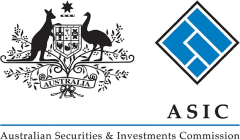
S Money complies with the relevant laws pertaining to privacy, anti-money laundering and counter-terrorism finance. This means you are required to provide I.D. when you place an order. It also means the order must be paid for by the same person ordering the currency and you must show your identification again when receiving your order.
Travel Money Cards vs Credit Cards
The days of carrying large wads of crumpled foreign bills in a wallet or purse while holidaying across the globe are mostly behind us. You can simply tap your bank card, or even your phone, to make purchases worldwide. There’s also temporary travel money cards available. However, deciding on the best way to transact and spend while travelling can be confusing.
Can I use my card abroad? What are the fees and exchange rates? Is it safe and convenient? It may be beneficial to use a combination of credit, debit and travel money cards on your next holiday. We’ll answer all these questions and more to determine the option that’s right for you.
Using a travel money card
Travel money cards, or travel cards , are charge cards that you can load with multiple foreign currencies prior to departure. You can use them to spend or withdraw cash overseas. Pre-loading these cards offers convenience but rates are fixed, meaning that you won’t be subject to fluctuations in the Australian dollar. If the dollar becomes stronger at home you’ll potentially miss out on value increases. Conversely, if it drops you’ll likely be better off.
Fees for travel money cards:
- Initial purchase and loading
- Currency conversion
- Top-ups or inactivity
- Balance refunds
- Replacement card
Some travel money cards take a percentage of the starting balance, approximately 1%, or charge a flat fee, usually up to $15. Many providers waive this cost. Depending on how much you’re considering loading it would be best to compare your options before deciding on a card.
Currency conversion fees range from 2-4%, while some cards offer fee-free services. If you need to pay with a currency that hasn’t been pre-loaded on your card you’ll likely incur a higher conversion cost at the time of purchase.
Spent a little too much on that lavish night out in Paris? You could be charged a fee, up to $15, to reload your card with the necessary currency needed to continue your trip. On the flip-side, if you aren’t spending enough and your card remains inactive for a month or more,you may be charged up to $4 for a dormant account.
Some cards charge a fee, between $10-$15, for returning the balance of your funds after travelling. You can sometimes avoid this cost by linking the card to a bank account or by continuing to use the card for purchases in Australia.
If you lose your card while travelling it may cost you up to $15 to replace it.
Using your credit and debit cards overseas
Credit cards and debit cards are some of the simplest ways to spend money abroad. You can use your existing cards so there’s no upfront fees. Transacting is the same overseas as it is in Australia, aside from the additional international fees that are applied.
Fees for credit cards:
- Cash advance
Foreign currency conversion costs can often be overlooked when you’re busy enjoying your holiday. These fees can range from 2-4% and are charged for every individual transaction. It’s important to note that many of the cards on the market currently offer fee-free conversions.
There are also fees associated with taking cash advances overseas. You’ll be stung with a currency conversion fee and interest rate charges - anywhere from 19-22%, sometimes higher.
Fees for debit cards:
- Overseas ATM withdrawal
- Overseas purchase
Although debit cards don’t incur the same costly cash advance interest fees as credit cards, you should be aware that the same currency conversion fees apply and there can be ATM withdrawal fees averaging $5 per transaction. Many financial institutions in Australia waive these overseas withdrawal fees so be sure to check with your bank regarding these costs.
There are still those that prefer their finances to be tangible. Carrying cash can help you to monitor your budget and prevent overspending. However, it may be a risky endeavour as pick-pockets are still prevalent in many countries and if you misplace your bankroll there is no way to recover lost funds. If you’re travelling to different countries on your journey you’ll have to visit currency exchange outlets to convert your money and be subject to potentially exorbitant fees and rates.
A simple solution to go cashless may be to use your banking app or a third-party budgeting tool to track and control your overseas spending. You can set daily spend limits, calculate costs, record expenditure and more.
What’s the best option for you?
There are a number of fee-free credit cards, debit cards and travel money cards available. Each card can incur different charges so it’s worthwhile comparing your options to decide which suits you best for your trip.
Some cards may not allow you to load a particular currency, while others will have costlier cross-currency conversion fees. For example, some credit and debit cards that offer 0% fees for overseas purchases may charge a higher exchange rate. This isn’t necessarily a negative as this premium rate is still generally better than those offered by most travel money cards.
When loading travel money cards with foreign currencies you should attempt to carry out these transactions at the most opportune time when exchange rates are most lucrative. Be sure to check real-time rates with your card provider as these are often different to the mid-market rates you may find online. Bank and foreign exchange service’s rate margins are typically higher, particularly among travel money card providers.
Most credit, debit and travel money cards can be used worldwide as global merchants generally accept Visa , Mastercard and American Express networks. You should check the specific country you’re visiting to ensure that the card you choose will be recognised and accepted.
Credit and debit card’s funds are often protected against fraudulent transactions and you’ll have access to speedy recourse and recovery options. Travel money cards may not offer the same level of dispute resolution so be sure to check out the terms and conditions of individual cards.
Many international accommodation providers and tour operators require a pre-authorisation for bookings and this may not be possible when using debit or travel money cards.
There are a range of credit cards that offer advantageous extras such as rewards programs for spending , travel insurance , airport lounge access and complimentary hotel concierge services .
Compare credit cards
Product database updated 04 May, 2024
Fact Checked

Share this page
Related credit cards articles.

Financial stress on the rise – what can you do about it?

CBA cuts 11 interest-free days from its rewards cards

Wisr's Joanne Edwards on tips to manage your debt

for up to 9 months, then 20.99%
Australian Credit Licence 286655
Fees & charges apply
Kogan Money Black Card
- RateCity Exclusive
- Apple & Google Pay
- Balance transfer
- No annual fee

Australian Credit Licence 234527
ANZ Low Rate (Credit Back Offer)
- Apple, Google & Samsung Pay
- Low annual fee

David Jones Premiere credit card

ANZ Rewards Black
- Bonus Points
Promoted credit cards

Purchase rate p.a.
Australian Credit Licence 286655 Fees & charges apply

Australian Credit Licence 234527 Fees & charges apply

Product data updated on 4 May 2024
An official website of the United States government Here's how you know
Official websites use .gov A .gov website belongs to an official government organization in the United States.
Secure .gov websites use HTTPS A lock ( Lock A locked padlock ) or https:// means you’ve safely connected to the .gov website. Share sensitive information only on official, secure websites.
Biden-Harris Administration Announces Final Rule Requiring Automatic Refunds of Airline Tickets and Ancillary Service Fees
Rule makes it easy to get money back for cancelled or significantly changed flights, significantly delayed checked bags, and additional services not provided
WASHINGTON – The Biden-Harris Administration today announced that the U.S. Department of Transportation (DOT) has issued a final rule that requires airlines to promptly provide passengers with automatic cash refunds when owed. The new rule makes it easy for passengers to obtain refunds when airlines cancel or significantly change their flights, significantly delay their checked bags, or fail to provide the extra services they purchased.
“Passengers deserve to get their money back when an airline owes them - without headaches or haggling,” said U.S. Transportation Secretary Pete Buttigieg . “Our new rule sets a new standard to require airlines to promptly provide cash refunds to their passengers.”
The final rule creates certainty for consumers by defining the specific circumstances in which airlines must provide refunds. Prior to this rule, airlines were permitted to set their own standards for what kind of flight changes warranted a refund. As a result, refund policies differed from airline to airline, which made it difficult for passengers to know or assert their refund rights. DOT also received complaints of some airlines revising and applying less consumer-friendly refund policies during spikes in flight cancellations and changes.
Under the rule, passengers are entitled to a refund for:
- Canceled or significantly changed flights: Passengers will be entitled to a refund if their flight is canceled or significantly changed, and they do not accept alternative transportation or travel credits offered. For the first time, the rule defines “significant change.” Significant changes to a flight include departure or arrival times that are more than 3 hours domestically and 6 hours internationally; departures or arrivals from a different airport; increases in the number of connections; instances where passengers are downgraded to a lower class of service; or connections at different airports or flights on different planes that are less accessible or accommodating to a person with a disability.
- Significantly delayed baggage return: Passengers who file a mishandled baggage report will be entitled to a refund of their checked bag fee if it is not delivered within 12 hours of their domestic flight arriving at the gate, or 15-30 hours of their international flight arriving at the gate, depending on the length of the flight.
- Extra services not provided: Passengers will be entitled to a refund for the fee they paid for an extra service — such as Wi-Fi, seat selection, or inflight entertainment — if an airline fails to provide this service.
DOT’s final rule also makes it simple and straightforward for passengers to receive the money they are owed. Without this rule, consumers have to navigate a patchwork of cumbersome processes to request and receive a refund — searching through airline websites to figure out how make the request, filling out extra “digital paperwork,” or at times waiting for hours on the phone. In addition, passengers would receive a travel credit or voucher by default from some airlines instead of getting their money back, so they could not use their refund to rebook on another airline when their flight was changed or cancelled without navigating a cumbersome request process.
The final rule improves the passenger experience by requiring refunds to be:
- Automatic: Airlines must automatically issue refunds without passengers having to explicitly request them or jump through hoops.
- Prompt: Airlines and ticket agents must issue refunds within seven business days of refunds becoming due for credit card purchases and 20 calendar days for other payment methods.
- Cash or original form of payment: Airlines and ticket agents must provide refunds in cash or whatever original payment method the individual used to make the purchase, such as credit card or airline miles. Airlines may not substitute vouchers, travel credits, or other forms of compensation unless the passenger affirmatively chooses to accept alternative compensation.
- Full amount: Airlines and ticket agents must provide full refunds of the ticket purchase price, minus the value of any portion of transportation already used. The refunds must include all government-imposed taxes and fees and airline-imposed fees, regardless of whether the taxes or fees are refundable to airlines.
The final rule also requires airlines to provide prompt notifications to consumers affected by a cancelled or significantly changed flight of their right to a refund of the ticket and extra service fees, as well as any related policies.
In addition, in instances where consumers are restricted by a government or advised by a medical professional not to travel to, from, or within the United States due to a serious communicable disease, the final rule requires that airlines must provide travel credits or vouchers. Consumers may be required to provide documentary evidence to support their request. Travel vouchers or credits provided by airlines must be transferrable and valid for at least five years from the date of issuance.
The Department received a significant number of complaints against airlines and ticket agents for refusing to provide a refund or for delaying processing of refunds during and after the COVID-19 pandemic. At the height of the pandemic in 2020, refund complaints peaked at 87 percent of all air travel service complaints received by DOT. Refund problems continue to make up a substantial share of the complaints that DOT receives.
DOT’s Historic Record of Consumer Protection Under the Biden-Harris Administration
Under the Biden-Harris Administration and Secretary Buttigieg, DOT has advanced the largest expansion of airline passenger rights, issued the biggest fines against airlines for failing consumers, and returned more money to passengers in refunds and reimbursements than ever before in the Department’s history.
- Thanks to pressure from Secretary Buttigieg and DOT’s flightrights.gov dashboard, all 10 major U.S. airlines guarantee free rebooking and meals, and nine guarantee hotel accommodations when an airline issue causes a significant delay or cancellation. These are new commitments the airlines added to their customer service plans that DOT can legally ensure they adhere to and are displayed on flightrights.gov .
- Since President Biden took office, DOT has helped return more than $3 billion in refunds and reimbursements owed to airline passengers – including over $600 million to passengers affected by the Southwest Airlines holiday meltdown in 2022.
- Under Secretary Buttigieg, DOT has issued over $164 million in penalties against airlines for consumer protection violations. Between 1996 and 2020, DOT collectively issued less than $71 million in penalties against airlines for consumer protection violations.
- DOT recently launched a new partnership with a bipartisan group of state attorneys general to fast-track the review of consumer complaints, hold airlines accountable, and protect the rights of the traveling public.
- In 2023, the flight cancellation rate in the U.S. was a record low at under 1.2% — the lowest rate of flight cancellations in over 10 years despite a record amount of air travel.
- DOT is undertaking its first ever industry-wide review of airline privacy practices and its first review of airline loyalty programs.
In addition to finalizing the rules to require automatic refunds and protect against surprise fees, DOT is also pursuing rulemakings that would:
- Propose to ban family seating junk fees and guarantee that parents can sit with their children for no extra charge when they fly. Before President Biden and Secretary Buttigieg pressed airlines last year, no airline committed to guaranteeing fee-free family seating. Now, four airlines guarantee fee-free family seating, and the Department is working on its family seating junk fee ban proposal.
- Propose to make passenger compensation and amenities mandatory so that travelers are taken care of when airlines cause flight delays or cancellations.
- Expand the rights for passengers who use wheelchairs and ensure that they can travel safely and with dignity . The comment period on this proposed rule closes on May 13, 2024.
The final rule on refunds can be found at https://www.transportation.gov/airconsumer/latest-news and at regulations.gov , docket number DOT-OST-2022-0089. There are different implementation periods in this final rule ranging from six months for airlines to provide automatic refunds when owed to 12 months for airlines to provide transferable travel vouchers or credits when consumers are unable to travel for reasons related to a serious communicable disease.
Information about airline passenger rights, as well as DOT’s rules, guidance and orders, can be found at https://www.transportation.gov/airconsumer .

Best Travel Credit Cards for Beginners of May 2024
5 best beginner travel credit cards in 2024, best overall: chase sapphire preferred® card.
Why we chose it: The Chase Sapphire Preferred® Card is a great starter travel card with elevated rewards on travel and dining, lots of options for redeeming your points and a suite of useful travel protections—all wrapped up in a $95 annual fee. Read our Chase Sapphire Preferred Card Review .
- Competitive rewards rates on travel and dining
- Many rewards redemption options, transfer partners and Chase Travel portal bookings
- Offers most of the basic travel protections you’ll need
- No Priority Pass lounge access
- Has an annual fee
- Subject to Chase’s unofficial 5/24 rule—you likely won’t be approved if you’ve opened more than five credit cards from any issuer in the past 24 months
Best for Simplicity: Capital One Venture Rewards Credit Card
Capital one venture rewards credit card.
After spending $4,000 in first 3 months from account opening
Why we chose it: Earning 5X miles on hotels and rental cars booked through Capital One Travel and 2X miles on everything else, the $95-annual-fee Capital One Venture Rewards Credit Card has no complicated rewards structures to keep track of. You can transfer your miles to travel partners or redeem them for statement credit against travel purchases. Read our Capital One Venture Card review .
- 2X flat rewards rate offers simplicity
- Good selection of transfer partners
- Current welcome bonus is competitive
- No bonus rewards categories besides Capital One Travel bookings
- Non-travel reward redemptions offer significantly less value
- Travel protections are less robust than the Chase Sapphire Preferred
Best for Premium Perks: Capital One Venture X Rewards Credit Card
Capital one venture x rewards credit card.
Why we chose it: If you want Priority Pass lounge access and other premium travel perks, the Capital One Venture X Rewards Credit Card is one of the most affordable ways to get it. The value from a $300 annual credit for travel booked through the Capital One Travel portal brings the $395 annual fee down to effectively $95—the same price as a mid-tier travel card—if you can fully use the credit. Read our Capital One Venture X card review .
- Priority Pass and Capital One lounge access
- Generous travel credits
- 10,000-mile anniversary bonus
- Annual travel credit limited to bookings made through the Capital One Travel portal
- $395 annual fee
Best for Travel Rewards on Everyday Spending: Citi Premier Card
Citi premier® card.
After spending $4,000 in the first 3 months of account opening, redeemable for $600 in gift cards or travel rewards at thankyou.com
Why we chose it: The $95-annual-fee Citi Premier® Card offers elevated rewards on everyday spending categories like groceries and gas, allowing you to rack up points from your regular spending and then transfer them to Citi’s hotel and airline partners. Read our Citi Premier Card review .
- Bonus rewards for restaurants, supermarkets, gas stations, air travel and hotels
- Can transfer points to travel partners
- Annual hotel savings benefit
- No travel protections
- $100 hotel savings benefit requires booking through Citi’s travel portal
- Few travel benefits
Best for Business Owners: Ink Business Preferred® Credit Card
Why we chose it: The Chase Ink Business Preferred® Credit Card, which operates within the same ecosystem as the consumer-facing Chase Sapphire Preferred, is Chase’s main business travel card. For a $95 annual fee, you’ll get a large welcome bonus, travel protections and good rewards rates on several business-related bonus categories. Read our Chase Ink Business Preferred® Credit Card review .
- High welcome bonus
- Various travel and purchase protections
- 25% redemption bonus on travel booked through Chase Travel
- Must have a business to qualify
- High spending threshold to earn welcome bonus
- Rewards are lackluster if your business’s main expenses fall outside of the bonus categories
A Closer Look at the Best Starter Travel Credit Cards
Best overall: chase sapphire preferred card.
Why we love this card: For a modest annual fee, the Sapphire Preferred offers all the basics you’d want in a travel card. From good rewards rates on travel and dining to robust travel protections to a lineup of valuable hotel and airline transfer partners, the Sapphire Preferred has it all. You’ll also get a 25% redemption bonus when redeeming your points through the Chase Travel, meaning each point is worth 1.25 cents. And, you can pool points from multiple Ultimate Rewards-earning cards in one account—so if you have a cash-back card like the Chase Freedom Flex℠ , you can transfer your points to the Chase Sapphire Preferred to access the transfer partners.
Who should have this in their wallet: Most travelers will benefit from this card, but especially travel card beginners. The wide range of redemption options, including both travel and non-travel options, make it easy to spend your points even if you’re not ready to dive into the complicated world of transfer partners.
Other cards to consider: If you’re looking for more premium benefits (like airport lounge access) but want to stay within the Chase ecosystem, consider the Chase Sapphire Reserve® . If you want a similar mid-tier travel card in a different rewards system with different transfer partners, the Capital One Venture Rewards Card is a good choice.
Why we love this card: The Capital One Venture is the closest alternative to the Chase Sapphire Preferred for anyone who wants a mid-tier travel card. Its 2X flat rewards rate on all purchases outside of hotels and rental cars booked through Capital One Travel (which earn 5X miles) is simple to keep track of. The Venture’s travel protections are slightly less robust than the Sapphire Preferred’s, but still enough to meet most needs. It also currently offers one of the highest welcome offers compared to other mid-tier travel cards.
Who should have this in their wallet: This card is perfect for anyone who wants a mid-tier travel card with flat-rate rewards or is looking for one of the biggest welcome bonuses on a sub-$100-annual-fee card.
Other cards to consider: Those who want a tiered rewards system may prefer either the Chase Sapphire Preferred or Citi Premier, while those looking for premium perks and lounge access will be better off with the Venture X.
Why we love this card: The Capital One Venture X is one of the most economical ways to get perks like airport lounge access and fee credit towards TSA PreCheck or Global Entry. The card’s $395 annual fee is significantly lower than two of the most popular premium travel cards, the Chase Sapphire Reserve with a $550 annual fee and The Platinum Card® from American Express at a $695 annual fee ( see rates and fees ). A $300 annual travel credit for bookings made through the Capital One Travel portal, as well as 10,000 bonus miles each anniversary, reduce the effective cost further. See how the Venture X stacks up against The Platinum Card .
Who should have this in their wallet: If you want Priority Pass and Capital One lounge access for the lowest annual fee, this card is the best way to get it. It’s also a good choice for anyone who wants an upgraded version of the regular Venture card, with better travel protections and more perks.
Other cards to consider: The Chase Sapphire Reserve and The Platinum Card from American Express also offer lounge access for higher annual fees. But each of these cards offer additional benefits that the Venture X doesn’t and have different rewards systems with different transfer partners. Check out our guide on the Venute X vs. Sapphire Reserve .
Why we love this card: There aren’t many travel cards that earn elevated rewards on everyday spending categories like groceries or gas, and cash-back cards that earn bonus points in those categories typically don’t have access to airline and hotel transfer partners. The $95-annual-fee Citi Premier offers the best of both worlds with its 3X points on airlines, hotels, gas stations, restaurants and supermarkets paired with a good selection of transfer partners.
Who should have this in their wallet: This card is great for anyone looking to rack up points with everyday spending and transfer them to Citi’s hotel and airline partners.
Other cards to consider: The Citi Premier’s lack of travel protections means you’ll likely want another travel card in your wallet, even if you primarily earn and spend points with the Premier. The Chase Sapphire Reserve and Capital One Venture X are both great ways to meet your travel insurance needs.
Best for Business Owners: Ink Business Preferred Credit Card
Why we love this card: Business owners looking for travel rewards will find a lot of value in the Chase Ink Business Preferred. For a $95 annual fee, you can earn a 100,000-point welcome bonus (after spending $8,000 on purchases in the first 3 months after account opening), travel protections and elevated rewards on common business spending categories. These include: shipping; advertising purchases made with social media sites and search engines; internet, cable and phone services; and travel. You can redeem your points for cash back, partner transfers and more. You’ll also get a 25% bonus when redeeming for travel through Chase Travel.
Who should have this in their wallet: Business owners who spend a lot in the card’s bonus categories and can meet the spending threshold for the impressive welcome bonus will find a lot of value in this card.
Other cards to consider: The Capital One Spark Miles for Business ($0 intro annual fee for the first year, then $95 after) and Capital One Spark Miles Select for Business (no annual fee) offer flat-rate rewards in a different ecosystem for a similar or lower price.
What Is a Travel Credit Card and How Do They Work?
A travel credit card is a credit card with features tailored to people who travel. They typically have higher rewards rates on travel purchases, earn rewards that can be redeemed for free travel through a travel portal or through airline or hotel loyalty programs and come with travel protections and travel-related perks like airport lounge access . They also generally don’t charge foreign transaction fees, making them great for international travel.
Travel credit cards can typically be split into two types: general travel cards and co-branded hotel and airline cards. General travel cards like the Chase Sapphire Preferred or the Capital One Venture earn rewards in their respective issuers’ rewards ecosystems—in this case, Chase Ultimate Rewards and Capital One Miles, respectively.
Your redemption options are set by the issuer and typically include the option to transfer your points to partner hotel and airline loyalty programs. The exact partners available depend on the card, but you’ll usually have quite a few options. The main benefits associated with these cards are typically not tied to any specific hotel or airline.
Co-branded cards are issued by a partnership between a credit card issuer (like Chase or American Express) and a specific hotel or airline (like Hyatt or Delta Air Lines). These cards usually earn rewards directly in the hotel or airline’s own rewards currency—World of Hyatt points for a Hyatt card, Delta SkyMiles for a Delta card, and so on. Their benefits also tend to be tied to the hotel or airline and may include perks like free checked bags or elevated status.
How to Choose the Best Beginner Travel Credit Card for You
To help sort through all the options, here are the most important factors you should look for when choosing a starter travel card:
Many travel credit cards charge an annual fee ranging from just under $100 to upwards of $500. Cards with a higher annual fee tend to offer better rewards or more benefits.
An annual fee can often be worth it if you can use most or all of a card’s benefits. But if you don’t travel a lot or don’t want to commit to an annual fee, start with a no-annual-fee card and upgrade later if you have the need for more or better features.
Rewards Rates
Many travel cards have tiered rewards, offering higher rewards rates on certain spending categories and a lower rate on all other purchases. To maximize your point earnings, choose a card whose award rates align with your normal spending habits.
For example, if you like to eat out a lot, look for a card that offers bonus points on dining . If you don’t want to think too much about maximizing rewards, you might prefer a simple flat-rate rewards card , which earns a flat rate on all purchases regardless of spending category.
Rewards Redemption Options
When it comes to redeeming rewards, not all credit cards are created equal. Some cards only let you redeem your points for cash back, statement credit or purchases through a travel portal. Others let you transfer points to airline and hotel partner loyalty programs, which you can then use to book award flights and award nights directly through the partner. Different cards have different transfer partners, and some have a greater selection than others.
Cash back and travel portals are easier to use, but point transfers typically give you much better value. Ideally, you should look for a card that offers both options. But if not, decide what’s more important to you—the option to quickly and easily liquidate your points for a fixed value, or the option to transfer points for the chance to get great deals on hotels and airfare if you’re willing to do some legwork.
Travel Protections and Benefits
Travel protections—like trip cancellation and interruption insurance, lost baggage insurance, or rental car insurance—reimburse you for some costs if things go wrong. Travel benefits—like airport lounge access or credits for a TSA PreCheck membership—upgrade your travel experience.
Most travel cards include some measure of travel protections and benefits, though the extent can vary from card to card. In general, cards with higher annual fees tend to have more or better benefits. When choosing a card, it’s important to consider what benefits you’ll actually use.
General vs. Co-Branded Card
In general, general travel cards provide more flexibility, while co-branded cards provide a quick way to rack up points within a specific loyalty program and benefits specific to a particular airline or hotel chain. Travel card beginners might be better off starting with a general travel card that gives them more options—especially if you’re still figuring out what you want from a travel card—unless you’re already loyal to a particular airline or hotel.
Other Travel Credit Card Alternatives
If you don’t want to open a dedicated travel credit card, here are some other options you should consider.
A Non-Travel Credit Card
At the end of the day, a travel card works just like any other credit card. If you already have a favorite cash back card , you can use it for travel purchases in addition to your everyday spending. For example, the following credit cards charge no annual fee and offer bonus categories that can cover all or some of your travel costs:
Although you might earn fewer rewards on travel purchases and have fewer travel protections, the convenience of using an existing card or the additional rewards in other categories may make it worthwhile.
For example, if your preferred form of travel is a road trip, a cash-back card that earns a lot on gas may be better than a travel card that earns more points on airfare. Just make sure that if you’re traveling internationally, you find a card without foreign transaction fees .
A Debit Card
Even if you have a credit card, you should always keep a debit card on hand for easy cash withdrawal without cash advance fees. But you can also skip credit cards altogether and pay for everything with a debit card when traveling.
This does have some downsides: you’ll generally earn fewer rewards , have fewer travel benefits and have fewer protections in the case of fraud. But for people who either can’t qualify for a credit card or don’t want a credit card for fear of getting into debt, a debit card is a perfectly fine option.
Frequently Asked Questions
What is the best travel card for beginners.
The best travel card for you depends on your spending habits, how you want to redeem your rewards, the annual fee you’re willing to pay and what travel protections or extra perks you value. But the Chase Sapphire Preferred is a well-rounded option with a modest annual fee that’s a good start for most travelers.
Is It Better to Use a Travel Card or a Debit Card?
When traveling, it’s typically better to use a travel credit card over a debit card—assuming you pay off your balance on time and in full every month so you aren’t charged interest or late fees. Travel credit cards offer rewards, travel protections and can be more secure than a debit card.
Do Travel Cards Charge Foreign Transaction Fees?
Foreign transaction fees are fees you incur when you use your card abroad or make a payment in a different currency and are typically charged as a percentage of the transaction. Many travel credit cards don’t charge foreign transaction fees, although you should check the rates and fees of your specific card to be sure. If you plan to travel abroad, it’s important to have a card without foreign transaction fees or you could rack up a lot of extra costs.
The post Best Travel Credit Cards for Beginners of May 2024 first appeared on Newsweek Vault .
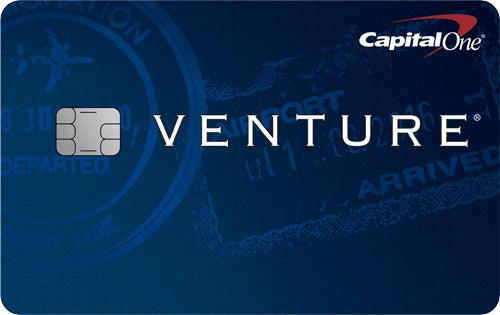
About Cash App
- What is Cash App Banking
- Cash App Key Features
- Pros and Cons
- Cash App Benefits
- Cash App Drawbacks
How Cash App Stands Out
Cash app banking review, how cash app banking compares.
- Why You Should Trust Us
Cash App Banking Review 2024
Affiliate links for the products on this page are from partners that compensate us and terms apply to offers listed (see our advertiser disclosure with our list of partners for more details). However, our opinions are our own. See how we rate banking products to write unbiased product reviews.
Cash App is a mobile payment app, not a bank. It is partnered with financial institutions, though. If you have a Cash App card, your Cash App account balance is FDIC -insured for up to $250,000 per depositor through Wells Fargo Bank.
Cash App is best known for letting users transfer money to each other, but the company also offers the Cash Card through its banking platform. It's a debit card you can use anywhere Visa is accepted. Cash App also allows you to deposit cash at retail locations, direct deposit your paycheck, and withdraw money at ATMs. But there are some notable differences from your standard debit card — it's easier to set up, there are fewer fees.
Cash App also has a savings account with a high interest rate; you can earn up to 4.50% APY if you meet certain requirements.
Cash App customer support is available by phone from 9 a.m. to 7 p.m. ET every day. You can also reach out to customer representatives through live chat on the app.
Cash App is rated 4.6 out of 5 stars in the Google Play store and 4.8 out of 5 stars in the Apple store.
no monthly service fee
up to 4.50%
- Check mark icon A check mark. It indicates a confirmation of your intended interaction. High APY if you meet certain requirements each month
- Check mark icon A check mark. It indicates a confirmation of your intended interaction. $1 minimum opening deposit
- Check mark icon A check mark. It indicates a confirmation of your intended interaction. No minimum balance requirements
- Check mark icon A check mark. It indicates a confirmation of your intended interaction. Set individual savings goals
- Check mark icon A check mark. It indicates a confirmation of your intended interaction. No monthly fees
- con icon Two crossed lines that form an 'X'. Need to meet certain requirements to earn the highest APY
The Cash App Banking Card has no fees or minimum balance requirements. You can also earn up to 4.50% on Cash App Savings if you meet certain requirements. Cash App is probably not the right choice if you want access to a full-service bank, though.
- To earn interest on savings, you must be at least 18 years old, have a Cash App Card, and use a personal Cash App account
- Earn a base yield of 1.50% APY
- Earn 4.50% APY if you receive direct deposits of at least $300 per month into Cash App
- Interest compounded and paid monthly
- With a Cash App Card, the savings balance is FDIC-insured through Wells Fargo Bank
What is Cash App Banking?
Cash App is a financial app with several features, including instant money transfers, a debit card and high-yield savings account , and investing tools. The primary banking services Cash App offers are its Cash App Card, a debit card that pulls money from your Cash App balance, and Cash App Savings , a savings account separate from your Cash App balance.
Cash App Savings lets you earn up to 4.50% APY if you meet certain requirements, and it lets you transfer money into your Cash App balance whenever you want for your Cash App Card to use.
Cash App Details
Direct deposit and instant transfers.
Cash App offers early direct deposit , so you'll be able to get your paycheck up to two days early. Having regular direct deposits of at least $300 per month will provide perks for both accounts, as well.
For your Cash App balance, you'll become eligible for free overdraft protection, allowing you to overdraw your account by up to $50. The best banks for overdrafts have similar overdraft protection but higher limits. You'll also get ATM fees reimbursed. For Cash App Savings , having a direct deposit of $300 each month will let you earn up to 4.50% APY, as long as you also have a Cash App Card.
Of course, what Cash App is most well-known for is its instant transfers. With Cash App, you can send money to other app users without fees. You can also transfer money to your bank account for free using ACH payments , but that takes a few days. Instantly transferring money from your Cash App balance to your bank account costs from 0.5% to 1.75% of the money you're transferring, with a minimum of $0.25.
No Monthly Fees on Basic Services
Cash App doesn't charge monthly fees to keep your card active or your account open. It also doesn't charge overdraft fees or require a minimum balance for either account, although Cash App Savings comes with a small $1 minimum opening deposit.
Ability to Buy, Sell, and Hold Stocks and Bitcoin
Cash App also doubles as an investment app . You can buy, sell, and hold stocks through its app, although it should be noted that playing the stock market is not covered by FDIC insurance, like the Cash App Card and Cash App Savings account are.
You can also purchase and send Bitcoin using Cash App. It will also let you automatically convert your part of your paycheck into Bitcoin.
Cash App Pros and Cons
Benefits of cash app banking, ease of sending and receiving money.
You can make some instant money transfers with Cash App, for free. Transfers from one Cash App balance to another Cash App balance won't come with any additional fees, and the app makes these transfers easy to do, no matter where you are.
Cash App also lets you move money from your Cash App Savings to your Cash App balance instantly, as many times as you want. That means you can get Cash App Savings ' up to 4.50% APY while still being able to use that money for purchases.
Integrated Investment Platform
Cash App Investing offers more options than you would generally find on mobile banking apps. You can invest small amounts in stocks with Cash App through a brokerage account, along with ETFs. This brokerage account holds the stocks and ETFs you buy, and the money you get from selling these stocks and ETFs goes directly into your cash app balance, which you can spend with your Cash App Card.
You can also use Cash App to make Bitcoin transactions, and you can choose to have parts of your direct deposit be automatically converted to Bitcoin.
Customizable Debit Card
The Cash App Card is a prepaid debit card that comes with many customizable benefits. The card is visually customizable; you can design your own Cash App Card, picking its color and material and drawing your own designs on it.
One of the biggest benefits of Cash App's customizable debit card are in the discounts you can earn, called "offers." At any time, you can go into the Discover tab of Cash App and choose a new discount, called an "offer," to apply to your card. When you use your card at the offer's listed location, you'll get the discount automatically. If this sound interesting to you, you might also be interested in getting a cash-back debit card .
Cash App Potential Drawbacks
Limitations on customer service channels.
Cash App doesn't offer 24/7 customer service the way that many banks do, and it doesn't have as many ways to contact customer support as banks either. While Cash App has a chat service on the app and has a phone line you can call, it doesn't have a customer support email you can reach out to. And you won't be able to go in-person to talk to someone, either, since Cash App is an app and not a brick-and-mortar bank.
Fees for Instant Transfers and Certain ATM Withdrawals
Cash App charges fees for out-of-network ATM withdrawals if you don't have a $300 direct deposit set up for your account. It also has a percentage-based charge for instant transfers from your Cash App balance to your bank. Finally, Cash App charges you a flat fee for cash deposits with participating retailers. If you know you're going to use ATMs frequently, there are banks that avoid ATM fees you might be more interested in.
Cash App lets you easily use the funds in your Cash App balance and Cash App Savings to invest in stocks and bitcoin. You can use Cash App's Round Up feature to round up any Cash App Card purchases to the nearest dollar, investing the extra money into your choice of stock, ETF , or Bitcoin.
You can also participate in both digital banking and Bitcoin transactions on Cash App. It lets you convert a portion of any direct deposit into Bitcoin automatically, if you're hoping to build up your Bitcoin supply.
Cash App Fees and Charges
While most of Cash App's banking services are free, there are some things that Cash App charges fees for. It charges $2.50 for out-of-network ATM use, in addition to the fees the ATM itself might charge. If you direct deposit $300 into your Cash App, you can get those fees waived.
In addition, Cash App charges a percentage of the money you're transferring for instant balance transfers to your bank account. And it charges you $1 every time you go to an affiliated store to deposit cash into your account.
Cash App User Experience and Accessibility
Since Cash App is an app, it has many of the same strengths and drawbacks that the best online banks have. On the plus side, you can access Cash App anytime you want from your phone, so Cash App is equally accessible from your home as when you're travelling. Unfortunately, this also means that Cash App has no in-person branches, so if you like banking in-person, you're out of luck.
Since Cash App doesn't have any physical locations, you'll notice that Cash App is generally less expensive if you're comparing Cash App fees to traditional banks' fees.
Cash App Banking FAQs
Cash App is a financial app, so it doesn't offer as many services as traditional banks, nor does it have physical branches. However, it also offers fewer fees and more investment services than you'll usually find at brick-and-mortar banks.
Yes, Cash App lets you receive direct deposits.
Cash App charges fees for instant transfers to your bank account and using ATMs outside of Cash App's ATM network.
Cash app customers can buy, sell, and hold stocks through Cash App Investing, as well as perform transactions with Bitcoin.
Your Cash App account balance is FDIC-insured through Wells Fargo for up to $250,000 per depositor. Cash App also uses data encryption and fraud detection to protect your financial information.
Cash App Card Review
- Check mark icon A check mark. It indicates a confirmation of your intended interaction. No minimum opening deposit
- Check mark icon A check mark. It indicates a confirmation of your intended interaction. No monthly service fees
- Check mark icon A check mark. It indicates a confirmation of your intended interaction. No overdraft fees
- Check mark icon A check mark. It indicates a confirmation of your intended interaction. Get paid up to 2 days sooner with early direct deposit
- Check mark icon A check mark. It indicates a confirmation of your intended interaction. ATM fees are reimbursed every month that you receive $300 in direct deposits
- Check mark icon A check mark. It indicates a confirmation of your intended interaction. You can deposit cash
- Check mark icon A check mark. It indicates a confirmation of your intended interaction. Free customizable debit card
- Check mark icon A check mark. It indicates a confirmation of your intended interaction. Access discounts at stores in the app
- con icon Two crossed lines that form an 'X'. $2.50 ATM fee if you don’t receive $300 in monthly direct deposits
- con icon Two crossed lines that form an 'X'. $1 fee when you deposit cash at a participating retailer
- The Cash Card is a prepaid debit card issued by Sutton Bank; with a prepaid card, you load money onto it so you don’t need to link it to a bank account
- Deposit cash at a participating retailer, a check with the app, or link an external account to transfer funds
- If you have a Cash Card, your Cash App balance is FDIC-insured for up to $250,000 through partner banks (this does not apply to investments or bitcoin)
The Cash App Cash Card is a strong debit card with no minimum deposit or monthly fees, making it more accessible than some more traditional checking accounts . Creating an account takes a few seconds, and once you sign up for a card, you can get instant access via Google Pay or Apple Pay.
The Cash Card also offers in-app integrations like Round Ups and instant discounts. With a few clicks, you can enable Round Ups, which automatically rounds up your purchases to the nearest dollar. You can put the extra money in your Cash App savings account or purchase Bitcoin.
Cardholders can also utilize offers for instant discounts at checkout. Cash App provides offers for various retailers, including coffee shops, retailers, and restaurants. Once you activate the offer within the app, you can use it when you pay.
Cash App Savings
Cash App Savings may be a good option if you're eligible to earn the highest rate. To earn interest on savings, you must be at least 18 years old, have a Cash App personal account, and have a Cash App Card.
The savings account offers a base yield of 1.50% APY if you have a Cash App Card. You'll need to set up monthly direct deposits of $300 or more into Cash App to earn 4.50% APY.
Cash App Savings also helps you contribute money to savings goals . To create a savings goal, you'll set a goal amount and add an emoji that represents your goal.
Cash App Banking vs. Chime Banking
Like Cash App, Chime aims to remove barriers that prevent customers from opening accounts. You don't need to undergo a credit check or banking history review. You also won't pay fees or have minimum account balance requirements, which is similar to the Cash Card.
Cash App and Chime also both have savings accounts. You're choice between Cash App and Chime could hinge on which savings account is a better fit. Cash App Savings offers 1.50% APY once you have a Cash App Card. You can increase interest to 4.50% APY if you set up monthly direct deposits of $300 or more into Cash App. Meanwhile, Chime Savings pays 2.00% APY. There aren't monthly requirements to earn the savings rate.
Chime Banking Review
Cash App Banking vs. Capital One 360 Banking
Capital One is an online bank with various account options, including the 360 Checking Account and 360 Performance Savings Account.
Capital One 360 Checking offers the typical features associated with top banks — no fees, no minimum deposit, overdraft protection, and a user-friendly app. You have to pay a $2 fee for using an out-of-network ATM, which is nearly the same as Cash App's fee. Capital One offers a discount program with the Capital One Shopping browser. However, the in-app Cash Card discounts provide a more seamless customer experience.
For savings accounts, the best option for you may ultimately depend on whether you qualify for the highest APY on Cash App Savings. Cash App Savings pays 4.50% APY if you receive monthly direct deposits of $300 or more per month into Cash App. (Otherwise, you'll earn a base yield of 1.50% APY.) Capital One 360 Performance Savings pays 4.25% (as of 4/11/24) APY, and you won't need to meet any requirements to earn interest.
Capital One 360 Bank Review
Why You Should Trust Us: How We Reviewed Cash App Banking
We used Personal Finance Insider's bank account rating methodology to review the Cash Card and Cash App Savings.
To create a rating for the Cash Card, we looked at customer service, the mobile app, ethics, and fees. Each category received a rating between 0 and 5, and our ratings factor in how the Cash Card compares to similar accounts. We then averaged those numbers to create a final score.
For the savings account, we looked at customer service, the mobile app, ethics, the interest rate, and fees. We also used a 0 to 5 rating scale for each category and averaged the numbers to determine the final score.
- Main content
- Best Travel Insurance 2024
- Cheapest Travel Insurance
- Trip Cancellation Insurance
- Cancel for Any Reason Insurance
- Seniors' Travel Insurance
- Annual Travel Insurance
- Cruise Insurance
- COVID-19 Travel Insurance
- Travel Medical Insurance
- Medical Evacuation Insurance
- Pregnancy Travel Insurance
- Pre-existing Conditions Insurance
- Mexico Travel Insurance
- Italy Travel Insurance
- France Travel Insurance
- Spain Travel Insurance
- Canada Travel Insurance
- UK Travel Insurance
- Germany Travel Insurance
- Bahamas Travel Insurance
- Costa Rica Travel Insurance
- Disney Travel Insurance
- Schengen Travel Insurance
- Is travel insurance worth it?
- Average cost of travel insurance
- Is airline flight insurance worth it?
- Places to travel without a passport
- All travel insurance guides
- Best Pet Insurance 2024
- Cheap Pet Insurance
- Cat Insurance
- Pet Dental Insurance
- Pet Insurance That Pays Vets Directly
- Pet Insurance For Pre-Existing Conditions
- Pet Insurance with No Waiting Period
- Paw Protect Review
- Spot Pet Insurance Review
- Embrace Pet Insurance Review
- Healthy Paws Pet Insurance Review
- Pets Best Insurance Review
- Lemonade Pet Insurance Review
- Pumpkin Pet Insurance Review
- Fetch Pet Insurance Review
- Figo Pet Insurance Review
- CarePlus by Chewy Review
- MetLife Pet Insurance Review
- Average cost of pet insurance
- What does pet insurance cover?
- Is pet insurance worth it?
- How much do cat vaccinations cost?
- How much do dog vaccinations cost?
- All pet insurance guides
- Best Business Insurance 2024
- Business Owner Policy (BOP)
- General Liability Insurance
- E&O Professional Liability Insurance
- Workers' Compensation Insurance
- Commercial Property Insurance
- Cyber Liability Insurance
- Inland Marine Insurance
- Commercial Auto Insurance
- Product Liability Insurance
- Commercial Umbrella Insurance
- Fidelity Bond Insurance
- Business Personal Property Insurance
- Medical Malpractice insurance
- California Workers' Compensation Insurance
- Contractor's Insurance
- Home-Based Business Insurance
- Sole Proprietor's Insurance
- Handyman's Insurance
- Photographer's Insurance
- Esthetician's Insurance
- Salon Insurance
- Personal Trainer's Insurance
- Electrician's Insurance
- E-commerce Business Insurance
- Landscaper's Insurance
Best Credit Cards of 2024
- Best Credit Card Sign-Up Bonuses
- Best Instant Approval Credit Cards
- Best Cash Back Credit Cards
- Best Rewards Credit Cards
- Best Credit Cards for Bad Credit
- Best Balance Transfer Credit Cards
- Best College Student Credit Cards
- Best 0% APR Credit Cards
- Best First Credit Cards
- Best No Annual Fee Cards
- Best Travel Credit Cards
- Best Hotel Credit Cards
- Best American Express Cards
- Best Amex Delta SkyMiles Cards
- Best American Express Business Cards
- Best Capital One Cards
- Best Capital One Business Cards
- Best Chase Cards
- Best Chase Business Cards
- Best Citi Credit Cards
- Best U.S. Bank Cards
- Best Discover Cards
- Amex Platinum Card Review
- Amex Gold Card Review
- Amex Blue Cash Preferred Review
- Amex Blue Cash Everyday Review
- Capital One Venture Card Review
- Capital One Venture X Card Review
- Capital One SavorOne Card Review
- Capital One Quicksilver Card Review
- Chase Sapphire Reserve Review
- Chase Sapphire Preferred Review
- United Explorer Review
- United Club Infinite Review
- Amex Gold vs. Platinum
- Amex Platinum vs. Chase Sapphire Reserve
- Capital One Venture vs. Venture X
- Capital One Venture X vs. Chase Sapphire Reserve
- Capital One SavorOne vs. Quicksilver
- Chase Sapphire Preferred vs. Capital One Venture
- Chase Sapphire Preferred vs. Amex Gold
- Delta Reserve vs. Amex Platinum
- Chase Sapphire Preferred vs. Reserve
- How to Get Amex Pre-Approval
- Amex Travel Insurance Explained
- Chase Sapphire Travel Insurance Guide
- Chase Pay Yourself Back
- CLEAR vs. TSA PreCheck
- Global Entry vs. TSA Precheck
- Costco Payment Methods
- All Credit Card Guides
- Citibank Savings Account Interest Rate
- Capital One Savings Account Interest Rate
- American Express Savings Account Interest Rate
- Western Alliance Savings Account Interest Rate
- Barclays Savings Account Interest Rate
- Discover Savings Account Interest Rate
- Chase Savings Account Interest Rate
- U.S. Bank Savings Account Interest Rate
- Marcus Savings Account Interest Rate
- Synchrony Bank Savings Account Interest Rate
- Ally Savings Account Interest Rate
- Bank of America Savings Account Interest Rate
- Wells Fargo Savings Account Interest Rates
- SoFi Savings Account Interest Rate
- Best Savings Accounts & Interest Rates
- Best High Yield Savings Accounts
- Best 7% Interest Savings Accounts
- Best 5% Interest Savings Accounts
- Savings Interest Calculator
- Emergency Fund Calculator
- Pros and Cons of High-Yield Savings Accounts
- Types of Savings Accounts
- Checking vs Savings Accounts
- Average Savings by Age
- How Much Should I Have in Savings?
- How to Make Money
- How to Save Money
- Compare Best Checking Accounts
- Compare Online Checking Accounts
- Best Business Checking Accounts
- Compare Best Teen Checking Accounts
- Best Student Checking Accounts
- Best Joint Checking Accounts
- Best Second Chance Checking Accounts
- Chase Checking Account Review
- Bluevine Business Checking Review
- Amex Rewards Checking Account Review
- E&O Professional Liability Insurance
- Best Savings Accounts & Interest Rates
- Best Credit Cards
- American Express Credit Cards
- Delta Reserve Business Card Review
On This Page
- Key takeaways
Is the Delta SkyMiles Reserve Business card worth it?
Delta reserve business card rewards, delta reserve business card benefits, delta skymiles reserve business card fees, rates & limit, how the delta reserve business card compares, is the delta skymiles reserve business card right for me, how do i apply for the delta reserve business card, faq: delta skymiles reserve business card.
Amex Delta Reserve Business Card: Top-Tier Perks for Loyalists
- The Delta SkyMiles® Reserve Business American Express Card earns 3 miles per dollar spent on all purchases made directly with Delta, 1.5 miles per dollar on office supplies, U.S. shipping expenses and eligible transit services, plus 1 mile per dollar on all other purchases.
- What we think: For business travelers who frequently fly with Delta, the luxury perks (namely lounge access) on the Delta SkyMiles Reserve Business can easily justify the $650 annual fee.
- The SkyMiles Reserve Business card has a $650 annual fee ( see rates and fees ).
- Membership gives you access to Delta Sky Club® lounges, Hertz President’s Circle® status and other valuable perks.
- The SkyMiles Reserve Business card comes with several travel-related benefits like priority boarding, access to priority upgrades and more.
The Delta SkyMiles® Reserve Business American Express Card offers 3 miles per dollar spent on all Delta purchases, multiple statement credits and other benefits, making it one of the best business credit cards for Delta Air Lines enthusiasts.
This Delta airlines credit card may be a good fit for your needs if you travel frequently and make it a priority to use Delta for all air travel. To help you choose a credit card, we have done an in-depth review of the Delta SkyMiles Reserve Business card.
Settle in and get answers to the following questions:
- Is the Delta SkyMiles Reserve Business card worth the annual fee?
- How many miles do you earn for each type of purchase?
- What are the benefits of carrying the Delta SkyMiles Reserve Business card?
- How does the SkyMiles Reserve Business card compare to other travel credit cards?
- Complimentary access to Delta Sky Clubs & Amex Centurion Lounges
- Annual Companion Certificate, good for one ticket in the same class you’re in
- Very generous welcome offer
- High annual fee ($650)
- Low rewards rate on non-Delta spending categories
- Requires good to excellent credit
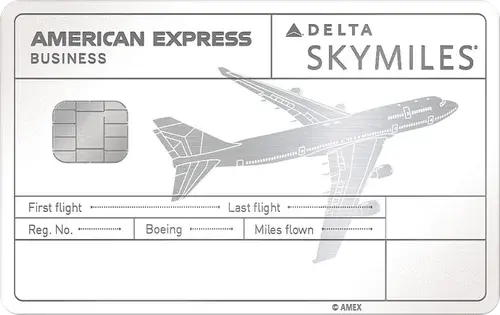
The Delta SkyMiles® Reserve Business American Express Card is ideal for cardholders who travel frequently as it offers 3 miles per dollar spent on every purchase you make directly with Delta.
Cardholders also receive 1.5 miles per dollar spent on certain business purchases, such as shipping and office supplies, making it a good fit for business owners. Overall, the card is worth it if you’re a frequent flier who prefers to book with Delta rather than using multiple airlines.
Pros and cons of the Delta SkyMiles Reserve Business card
- 3 miles per dollar spent on all purchases made directly with Delta
- 1.5 miles per dollar spent on office supplies, U.S. shipping and eligible transit expenses
- 1 mile per dollar spent on all other categories
- Annual companion certificate
- Delta Sky Club® access
- Medallion® Qualification Dollars boost
- $650 annual fee
- Sky Club access limited to 15 visits per year unless you spend at least $75,000 on your card
- Low earnings rate on non-Delta purchases
Learn more about Delta SkyMiles Reserve Business card
Terms apply / Rates & fees
The Delta Reserve Business card is an excellent rewards credit card for frequent travelers.
It comes with a generous welcome bonus and gives you several ways to earn miles when you use your card. Here’s what you need to know about earning and redeeming your rewards.
Welcome bonus
American Express is currently offering 75,000 bonus miles if you spend $10,000 within six months of opening your account. The value of the welcome bonus depends on how you choose to redeem your rewards.
For example, SkyMiles are usually worth the most when you redeem them for Award Travel. They’re worth a little less when you redeem them for seat upgrades and other perks.
Earn Delta SkyMiles Reserve Business rewards
With the American Express Delta Business Reserve card, it’s easy to earn rewards.
You’ll earn at the following rates:
- 3X: Earn 3 miles per dollar spent on all purchases made directly with Delta. For example, if you spend $900 on airfare, you’ll earn 2,700 miles.
- 1.5X: Earn 1.5 miles per dollar spent on U.S. shipping expenses, eligible transit purchases and office supplies. If you spend $800 on shipping expenses, $200 on eligible transit purchases and $500 on office supplies, that’s 2,250 miles (1,500 x 1.5 cents per mile).
- 1X: Earn 1 mile per dollar spent on all other purchases. If you reach $150,000 in card spend in a calendar year, you’ll earn 1.5 miles per dollar spent on all purchases for the rest of the year.
Redeem Delta Reserve Business rewards
One of the easiest ways to redeem your miles with this travel credit card is to purchase flights to more than 1,000 destinations. You can use your miles for flights with Delta or one of the following partner airlines: Air France, KLM, Virgin Atlantic, Hawaiian Airlines and Aeromexico.
American Express also offers the following redemption methods:
- Seat selection and upgrades: If you need a little more legroom, use your miles to pay for an upgrade from Main Cabin to Comfort+ or First Class.
- Delta Sky Club memberships: Delta allows Medallion members to purchase annual Sky Club memberships. You can use your miles to pay for an individual membership or an executive membership.
- Certain Delta fees: Use your miles to cover standard baggage fees at select U.S. airports.
- Gift cards: Visit the SkyMiles Marketplace to purchase gift cards with your miles. You can use Delta gift cards to pay for airfare or cover the cost of certain Delta Vacations packages.
- Magazine subscriptions: If you live in the United States, you can use your miles to subscribe to participating magazines. Options include People, Entertainment Weekly, InStyle and Better Homes & Gardens.
- Delta Stays: Use your miles to pay for hotels or vacation rentals when you book with Delta Stay.
- Charity donations: If you’re feeling charitable, donate your miles via the SkyWish program. SkyWish uses miles to help Canine Assistants, the Breast Cancer Research Foundation, Children’s Miracle Network Hospitals and other nonprofits.
- Delta Vacations®: Your miles are worth 15% more when you use them to book travel through Delta Vacations.
- Premium drinks in Delta Sky Club lounges: Use your miles to buy premium wines or signature cocktails at Delta Sky Clubs.
- Delta SkyMiles Experiences: American Express allows you to use your miles to bid on exclusive events and other experiences. For example, you can use miles to book a luxury getaway or bid on a once-in-a-lifetime culinary package.
The Delta SkyMiles Reserve Business card comes with a variety of benefits, making it one of the best credit cards on the market.
Travel benefits
- Priority boarding: Cardholders have access to priority boarding on all Delta flights booked with the Delta Reserve for business credit card. Priority boarding gives you a little extra time to settle in and get ready for your flight.
- Airport lounge access: Members receive 15 complimentary visits to Delta Sky Clubs each year (unlimited visits for members who spend at least $75,000 in a calendar year). Delta Reserve Business cardholders also have access to Centurion® and Escape lounges.
- Delta companion certificate: Your card comes with an annual companion certificate, which entitles you to one free ticket to a destination in the United States, Central America or the Caribbean (Main Cabin, Comfort+ or First Class). Although the ticket is free, you must pay up to $250 in taxes and fees depending on your destination.
- Access to priority upgrades: Your membership gives you priority access to seat upgrades on Delta flights. For example, if you book in the Main Cabin, you qualify for a complimentary upgrade to Comfort+ if there are any seats available on your flight.
- Free checked bag: When you fly Delta, you can check your first bag for free, saving up to $60 per round-trip flight.
- Global Entry or TSA PreCheck application fee credit: If you have the Delta SkyMiles Reserve Business card, you’re eligible for a statement credit to cover the cost of applying for Global Entry or TSA PreCheck . The credit is worth up to $100 depending on which service you choose.
- 15% off Award Travel: Delta gives you 15% off when you use your card to book Award Travel via Delta.com or the Delta mobile app.
- Hertz President’s Circle® status: Cardholders receive complimentary President’s Circle Status with the Hertz loyalty program. President’s Circle status gives you access to free upgrades, 50% bonus points on all Hertz rentals and other perks.
- Travel insurance: Your card comes with several types of travel insurance, including trip interruption coverage and trip delay coverage. Travel insurance helps you recoup some of your costs if you have to cancel or delay your trip for a covered reason.
Eligibility and Benefit level varies by Card. Terms, Conditions, and Limitations Apply. Please visit americanexpress.com/benefitsguide for more details. Underwritten by Amex Assurance Company.
Statement credits
- Up to $120 rideshare credit: The Amex Delta Reserve Business card gives you $10 in statement credits per month when you use it to pay for rides with select providers. This benefit is worth up to $120 per year ($10 per month x 12 months).
- Up to $250 Delta Stays credit: You’ll receive a statement credit of up to $250 when you use your card to pay for an eligible booking with Delta Stays.
- Up to $240 Resy restaurant credit: American Express offers statement credits of up to $20 per month for eligible reservations booked through Resy and paid for with your SkyMiles Reserve Business card. If you make reservations every month, you could earn up to $240 per year.
Headstart and MQD Boost
Delta uses Medallion Qualification Dollars (MQDs) to track how much you spend on vacation packages, Delta flights and certain American Express credit cards . The number of MQDs you earn affects your status in the Medallion program.
To help you reach Medallion status even faster, the Delta Business Reserve card gives you a $2,500 MQD Headstart. Cardholders also qualify for the MQD Boost, which gives you extra Medallion Qualification Dollars for purchases made on your Delta SkyMiles Reserve American Express card.
You get $1 MQD for every $10 worth of purchases. For example, a purchase of $2,000 is worth $200 MQDs.
Before you apply for the Delta Reserve Business card, make sure you review the terms, including card fees, interest rates and spending limits ( see rates and fees ).
Delta Reserve Business card fees
The Delta Reserve Business card has an annual fee of $650.
Users also pay the following fees:
- Additional cardholder fee: $175 per cardholder
- Balance transfer fee: N/A (no balance transfers allowed)
- Cash advance fee: $5 or 3% of the advance, whichever is greater
- Foreign transaction fee: $0
Delta Reserve Business interest rates
You can expect to pay the following rates when you use your SkyMiles Reserve Business card:
- Regular APR: 20.99% to 29.99% variable based on creditworthiness
- Purchase intro APR: N/A
- Balance transfer APR: N/A
Delta Reserve Business card credit limit
American Express doesn’t advertise minimum or maximum credit limits for the SkyMiles Reserve Business card. Your credit limit will depend on your credit scores, your annual income and other factors. Some users start with limits as low as $1,000, while others qualify for much higher limits.
The main advantage of applying for the Delta Reserve Business card is that you get 3 miles per dollar spent on all Delta purchases.
If you fly frequently, this reward rate makes it easy to rack up miles. This airline credit card also comes with more than a dozen benefits, such as priority seating, free checked bags and Sky Club access.
The Delta SkyMiles Reserve Business card falls a bit short when it comes to miles earned in other spending categories. You can get 1.5 miles per dollar spent on certain business expenses, but you don’t get bonus miles on grocery, gas or dining purchases.
Delta SkyMiles® Reserve Business American Express Card vs. Delta SkyMiles® Gold Business American Express Card
The Delta SkyMiles® Gold Business American Express Card has a much lower annual fee ($150, see rates and fees ) than the SkyMiles Reserve Business card, but it only gives you 2 miles per dollar spent on Delta purchases.
However, the $150 fee is only after the first year of membership ($0 the first year), and you get 2 miles per dollar spent on shipping expenses and certain advertising purchases. The Delta Reserve Business card is a better pick if you want to maximize your earnings on Delta purchases. Otherwise, you may want to go with the SkyMiles Gold Business card.
Delta SkyMiles® Reserve Business American Express Card vs. Delta SkyMiles® Platinum Business American Express Card
The Delta SkyMiles® Platinum Business American Express Card gives you 3 miles per dollar spent on Delta purchases and hotels, giving it a slight edge over the Delta Reserve Business card.
However, you only get 1.5 miles per dollar spent on U.S. shipping and eligible transit purchases, and only after you spend at least $5,000. The SkyMiles Reserve Business card doesn’t have a minimum spending requirement to get 1.5 miles per dollar on these purchases.
Additionally, the SkyMiles Platinum Business card has fewer benefits. For example, the Resy credit is only worth up to $120, and you can only use the companion certificate to purchase Main Cabin seating. Due to the reduced number of benefits available, the SkyMiles Platinum Business card has an annual fee of just $350 ( see rates and fees ) compared to the $650 fee for the Delta SkyMiles Reserve Business card.
Delta SkyMiles® Reserve Business American Express Card vs. The Business Platinum Card® from American Express
When you compare the Delta SkyMiles Reserve Business card with The Business Platinum Card® from American Express , the Business Platinum Card is the clear winner. It has a $695 annual fee ( see rates and fees ), which is slightly more than the $650 fee for the SkyMiles Reserve Business card. However, it offers many more travel and business benefits.
For example, you get 5 points per dollar spent on flights and prepaid hotels. Since the Business Platinum Card isn’t a co-branded Delta product, you get points on every airline purchase, not just Delta purchases.
The Business Platinum Card also comes with credits for Adobe Creative Suite, Dell Technologies, Indeed and wireless telephone service.
Read our full Amex Business Platinum card review
The Delta SkyMiles Reserve Business card is best for frequent flyers who are loyal to Delta and want to earn SkyMiles rather than cash back or bonus points.
You may also benefit from the card if you own a business and spend a significant amount of money on office supplies and U.S. shipping expenses.
If you don’t travel with Delta often but are looking for an Amex business card , consider these options to see if they are a better fit for you:
- The American Express Blue Business Cash™ Card
- The Blue Business® Plus Credit Card from American Express
- The Business Platinum Card® from American Express
- American Express® Business Gold Card
- The Plum Card® from American Express
You can learn more about the Delta SkyMiles Reserve Business card and apply online.
Simply fill out the application on the American Express website. Note that the Amex Delta Reserve Business card is for applicants with good to excellent credit scores .
Is it hard to get the Delta SkyMiles Reserve Business card?
It’s somewhat difficult to get the Delta Reserve Business card, as you must have good or excellent credit.
What credit score do you need for the Delta SkyMiles Reserve Business card?
American Express doesn’t publish minimum scores for its products, but you should have a good score before you apply. Good FICO® scores start at 670.
Is the Delta Reserve Business card worth it?
The Delta Reserve Business card is worth it if you’re a loyal Delta Air Lines customer and want to earn miles to use on flights and other travel purchases.
How much is an additional card for the Delta SkyMiles Reserve?
The fee is $175 per additional cardholder.
What are the benefits of the Delta Reserve Business card?
The Delta Reserve Business card comes with a variety of benefits, including an annual companion certificate, Resy and rideshare credits, seat upgrades and 15% off Award Travel. If you have the Delta Reserve Business card, you can also check your first bag for free at participating U.S. airports.

Leigh Morgan is a seasoned personal finance contributor with over 15 years of experience writing on a diverse range of professional legal and financial topics. She specializes in subjects like navigating the complexities of insurance, savings, zero-based budgeting and emergency fund development.
In the last five years, she’s authored over 300 articles for credit unions, digital banks, and financial professionals. Morgan is also the author of “77 Tips for Preventing Elder Financial Abuse,” a book focused on helping caregivers protect the elderly from financial scams.
In addition to her writing skills, she brings real-world financial acumen thanks to her previous experience managing rental properties as part of a $34 million real estate portfolio.
Explore related articles by topic
- American Express
- Credit Card Reviews
- Compare Cards
- All Credit Card Articles
- Types of Credit Cards
- Learn The Basics: Credit Cards 101
- Credit Scores & Reports Explained
- Tips For Building & Rebuilding Credit
- Card Rewards & Perks
Best Credit Cards for College Students in May 2024
Best Travel Credit Cards of 2024 | Compared & Reviewed
Best 0% Interest Credit Cards of May 2024 | 0% APR until 2025
Best Balance Transfer Credit Cards with 0% APR of 2024
Best Credit Cards with No Annual Fee in May 2024
Best Airline Credit Cards of 2024
Best Business Credit Cards of 2024
Best Starter Credit Cards If You Have No Credit History
Best Cash Back Credit Cards of 2024
Best Rewards Credit Cards of 2024
Best Credit Cards for Bad Credit 2024 | Cards for Credit Scores Below 690
Best Gas Credit Cards of May 2024
Best Hotel Rewards Credit Cards of 2024 | Earn Hotel Loyalty Points
Best AmEx Credit Cards of 2024
Best Discover Credit Cards 2024
Best Chase Credit Cards of 2024
Compare the Best Citi Credit Cards of 2024

What is a Good APR for a Credit Card?
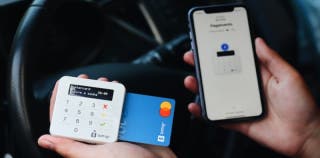
What is a Bad Credit Score?
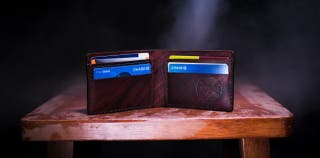
Does Closing a Credit Card Hurt Your Credit?

How Do Credit Cards Work? Understanding the Basics of Credit Cards
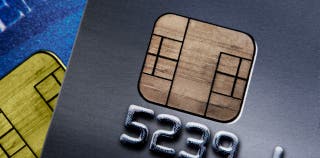
Difference Between Credit Cards and Charge Cards

How to Withdraw Money from a Credit Card - Cash Advances Explained

How to Build Credit: Steps to Build & Improve Your Credit Score
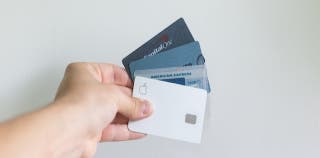
How Does Credit Card Interest Work? Understanding APR

What Is a Charge-off & How Can I Remove One from My Credit?

How to Increase Your Credit Card Limit Without Hurting Your Credit Score

What is the Credit Utilization Ratio? Calculate Your Ratio
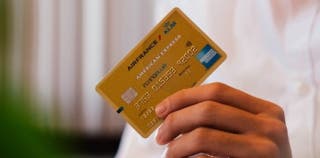
How to Get Pre-Approved for an Amex Credit Card
Best Secured Credit Card of May 2024

How to Raise Your Credit Score Fast

What is a Good Credit Score? [And Why You Should Care]

How to Check Your Credit Score

How to Safely Get a Free Credit Report

How to Pay A Credit Card Bill - Payment Options & Tips

Differences Between a Soft Credit Check and a Hard Inquiry

Global Entry vs. TSA PreCheck: Which Should You Get?
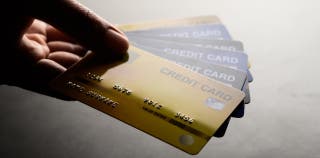
How Many Credit Cards Should You Have? (Can You Have Too Many?)
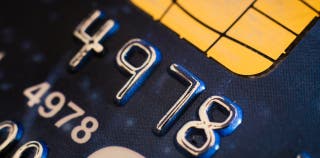
What Are Credit Card Numbers & What Do They Mean?

Can I Pay My Mortgage with a Credit Card?

Can You Transfer Money From a Credit Card to a Bank Account?

Payment Methods You Can Use At Costco
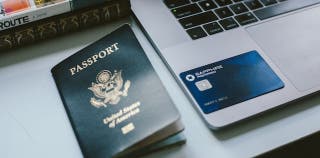
Chase's Pay Yourself Back Feature: Is it Worth it?

Renting a Car With A Debit Card: Everything You Need to Know

CLEAR vs. TSA PreCheck: What You Need to Know
Best U.S. Bank Credit Cards 2024

Chase Sapphire Travel Insurance Coverage: What To Know & How It Works

2024 Complete Guide to American Express Travel Insurance
Amex Gold vs. Platinum: Platinum Wins for Travel Benefits
American Express Gold Card Review 2024
American Express Platinum Review: Level-Up Your Travel
Amex Platinum vs. Chase Sapphire Reserve: Travel Card Duel
Find the Best American Express Business Card of 2024
Best Delta Air Lines Credit Cards of May 2024
Best Capital One Credit Cards 2024
How to Use CardMatch to Get the Best Credit Card Offers
Capital One Venture X Card Review: Premium Travel Benefits
Capital One Venture Card Review: Worth the $95 Fee?
Capital One Venture vs. Venture X: Victory for Venture X
Capital One Quicksilver Card Review: Is it Any Good?
Capital One SavorOne vs. Quicksilver: A Win for SavorOne
Capital One SavorOne Card: Cash Rewards for Fun-loving Foodies
American Express Blue Cash Preferred Review: A Game Changer for Families
Fortiva Credit Card Review: Is It Any Good?
Milestone Mastercard Review: Acceptable for Credit Building
Destiny Mastercard® Review: Good for Building Credit?
OpenSky Secured Credit Card Review May 2024 | Is it Right for You?
Amex Blue Cash Everyday Review: Maximize Your Daily Spending
Delta SkyMiles Gold Card Review: Worth It? Maybe.
Delta SkyMiles Reserve Card Review: Worth it for Sky Club?
Delta SkyMiles® Platinum Amex Review: Travel Perks Aplenty
Capital One Venture X vs. Chase Sapphire Reserve: Sapphire Succeeds
Capital One Platinum Card Review: Who Should Get This Card?
Capital One Platinum Secured Credit Card Review May 2024
Chase Sapphire Preferred Card Review May 2024
Is the Chase Sapphire Reserve Card Worth it? 2024 Review
Chase Sapphire Preferred vs. Reserve: Ultimate Showdown
First Progress Secured Credit Cards: What You Need To Know
Best Marriott Credit Cards of May 2024
Aspire Cash Back Reward Credit Card Review - May 2024
Capital One Spark Business Cards: Which Is the Best?
Best Southwest Rapid Rewards Credit Cards of May 2024
Self Secured Visa Review: A New Way to Build Credit
FIT Platinum Mastercard Review: Is It Worth It?
Marriott Bonvoy Brilliant Review 2024: Benefit-Rich but Pricey
Hilton Honors Amex Review: Decent Perks for No Annual Fee
United Explorer Card Review: Good Value, Great Benefits
United Club Infinite Card Review: Lounge Access and Luxury Perks
Best United Airlines Credit Cards 2024: Which Should I Get?
Chase Sapphire Preferred vs. Capital One Venture: Sapphire Prevails
Chime® Credit Builder Secured Credit Builder Visa® Card
Chase Sapphire Preferred vs. Amex Gold: Who Will Win?
Chase Business Credit Cards: Your Complete Guide
Reflex Platinum Mastercard Review May 2024
Walmart Rewards Mastercard Review: 5% Back Online
Capital One VentureOne: Decent Travel Perks for No Annual Fee

Instant Use Credit Cards You Can Use Immediately After Approval

Best Credit Card Welcome Offers for New Cardholders
Chase Freedom Unlimited: Impressive Rewards for No Annual Fee
Mastercard Black Card Review May 2024

Best Credit Cards for Building Credit May 2024

Amex Hilton Honors Surpass Card: Hefty Fee, Heftier Perks

Delta Reserve vs. Amex Platinum: Platinum Comes Out Ahead

Amex Business Gold Card Review: Earn Up to 4X Rewards Points

Amex Business Platinum Review: Luxury Benefits at a Cost

Amex Blue Business Cash Review: Cash Rewards for No Fee
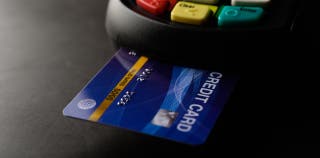
Amex Blue Business Plus Review: Solid Rewards for No Fee
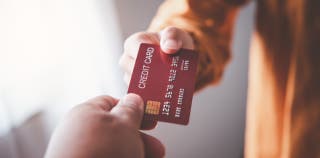
Amex Plum Card Review: Rewards for Paying Early
Amex Hilton Honors Business Card Review 2024
Marriott Bonvoy Business Card Review 2024: Is It Worth It?
Surge Platinum Mastercard Review: High Price to Build Credit
Capital One SavorOne Student Card: Superb Rewards for Students
Capital One Quicksilver Student Card: Uncomplicated Cash Back
Capital One QuicksilverOne Review: Good Rewards for Fair Credit
Capital One Spark Miles Business Card: Simple Travel Rewards
Capital One Platinum vs. Quicksilver: Quicksilver Triumphs
Delta SkyMiles Blue Credit Card: Good for Occasional Delta Flyers
* Opinions expressed here are those of the LA Times Compare Cards Team and have not been reviewed or approved by any advertiser or entities included within this content. See our editorial policy for more details.
All products or services are presented in this content without warranty. The information, including card details such as rates and fees, is accurate at the time of publish. Please visit each bank's website directly for the most current information.
Policy Details
LA Times Compare is committed to helping you compare products and services in a safe and helpful manner. Our goal is to help you make sound financial decisions and confidently choose your next credit card.
We work to ensure that the information and advice we offer on our website is objective, unbiased, verifiable, easy to understand for all audiences, and free of charge to our users. We don’t feature all products and services available on the market but provide a wide range of options from top providers offered through Bankrate. Bankrate has partnerships with issuers including, but not limited to, American Express, Bank of America, Capital One, Chase, Citi and Discover.
View Bankrate’s privacy policy .
We can offer our services thanks to partners that compensate us. This may affect which products we write about and where and how product offers appear on our website – such as the order in which they appear. This does not affect our ability to offer unbiased reviews and information about these products; all partner offers are clearly marked. Given our collaboration with top providers, it’s important to note that our partners are not involved in deciding the order in which brands and products appear. We leave this to our editorial team who review and rate each product independently.
At LA Times Compare, our mission is to help our readers reach their financial goals by making smarter choices. As such, we follow stringent editorial guidelines to ensure we offer accurate, fact-checked and unbiased information that aligns with the needs of the Los Angeles Times audience. Learn how we are compensated by our partners.
Capital One Main Navigation
- Learn & Grow
- Life Events
- Money Management
- More Than Money
- Privacy & Security
- Business Resources
Capital One Venture vs. Quicksilver: Card comparison
April 30, 2024 | 7 min read
Venture and Quicksilver are two cards from Capital One that reward cardholders for their purchases. Venture offers miles, and Quicksilver offers cash back. Keep reading to learn more about their similarities and differences.
Key takeaways
- Venture and Quicksilver are rewards credit cards. Venture offers miles rewards on every purchase. Quicksilver offers cash back rewards for everyday expenses.
- Venture cardholders earn unlimited 2 miles per dollar on every purchase, every day.
- Quicksilver cardholders earn 1.5% cash back on every purchase, every day.
- Venture and Quicksilver cardholders earn 5 miles per dollar on hotels and rental cars booked through Capital One Travel.
See if you’re pre-approved
Check for pre-approval offers with no risk to your credit score.
Key differences between Venture and Quicksilver
Venture is a travel rewards credit card that lets you earn miles. Quicksilver is a cash rewards credit card that lets you earn cash back on every purchase. Here’s a quick look at some of their key features:
What is a Capital One Venture card?
Venture is a travel rewards credit card for those with excellent credit. It offers unlimited 2X miles on every purchase and 5X miles on hotels and rental cars booked through Capital One Travel. Cardholders can also earn 75,000 bonus miles if they spend $4,000 within the first 3 months. 1 It has a $95 annual fee. View important rates and disclosures.
What is a Venture card good for?
With a Capital One Venture credit card, you earn unlimited miles on every purchase you make with the card. So whether you’re booking the vacation of a lifetime or buying a new sofa, you’ve got rewards miles to show for it.
Venture also offers lots of flexibility over how and when you redeem your rewards:
- Book flights, hotels and rental cars through Capital One Travel .
- Get reimbursed for past travel purchases.
- Transfer miles to more than 15 travel loyalty programs . 2
- Redeem miles for cash, gift cards or exclusive tickets through Capital One Entertainment .
- Pay for Amazon.com purchases or eligible purchases at millions of online stores through PayPal .
What is a Capital One Quicksilver card?
Quicksilver is a cash back rewards card for those with excellent credit. It offers unlimited 1.5% cash back on every purchase, every day, and 5% cash back on hotels and rental cars booked through Capital One Travel. Cardholders can also earn a $200 cash bonus if they spend $500 within the first 3 months. 1 Quicksilver has a low intro APR for 15 months on purchases and balance transfers and a variable APR after that. It has no annual fee. View important rates and disclosures.
What is a Quicksilver card good for?
With 1.5% cash back on every purchase, Quicksilver is an ideal card for everyday use and a solid way to maximize rewards on all your purchases. There’s no limit on how much you can earn and no minimum for how much you can redeem.
When you’re ready to cash in your rewards, there are plenty of options. 3 For example, you can redeem them for a statement credit or check. You can use them to cover the cost of a recent purchase or get gift cards from retailers, restaurants, hotel chains and more. 4 You can book trips through Capital One Travel. You can even use them to shop at Amazon.com or at millions of online stores through PayPal.
Key similarities of Venture and Quicksilver
Every Capital One credit card comes with access to free mobile apps and tools to help you monitor your accounts and track your finances 24/7, including:
- CreditWise from Capital One: CreditWise offers an easy way to monitor your credit. You can access your TransUnion® credit report and VantageScore 3.0 credit score without hurting your scores. And it’s free for everyone, not just Capital One cardholders. CreditWise also scans the dark web for your personal information, like Social Security numbers or compromised email addresses, and sends you an alert if anything is detected. 5
- Eno, your Capital One assistant: Eno monitors your account around the clock for things like duplicate charges or tips that are much higher than your usual amount. Eno will reach out if it spots something unusual and can help you fix it. 6
- Capital One Mobile app: Access your accounts, redeem your rewards, pay your bills, view recent activity and more with the Capital One Mobile app . 7
Which credit card is best for you?
Only you can answer the question of which credit card is best for you. Everyone’s situation is different, and picking a credit card is a personal decision.
But if you’re comparing Venture and Quicksilver, you might consider Venture if you travel regularly for work or play. And you might consider Quicksilver if you’re interested in a flat rate of cash rewards no matter what you buy.
Should I upgrade my Capital One card to Quicksilver or Venture?
If your current credit card no longer suits your spending habits and lifestyle, it might be time to consider a change. The term upgrade can be misleading, though. Swapping your current card for one with fewer rewards and a lower annual fee, for example, can still be an improvement.
If you’re a Capital One cardholder, you sign in to your Capital One account and ask Eno for help finding potential offers.
Can I have both Quicksilver and Venture cards?
It’s possible to have multiple credit cards from the same issuer. And Quicksilver and Venture could give you access to different types of rewards. Just make sure you know the pros and cons of having multiple credit card accounts . And remember that if you’re applying for more than one card at a time, it could have a negative effect on your credit scores.
More Capital One rewards cards
Venture is one of several Capital One credit cards that offer travel rewards. And Quicksilver is only one of Capital One’s cash back rewards cards. Cardholders can consider things like the cards’ varying benefits, reward rates, APRs and bonuses when deciding which fits their needs, spending habits and lifestyle.
Other travel rewards cards
Here’s a quick look at the other Capital One travel and miles rewards cards :
- Venture X Rewards: With excellent credit scores, you could qualify for a Venture X card. For a $395 annual fee, you’ll earn unlimited 10X miles on hotels and rental cars and 5X miles on flights and vacation rentals booked through Capital One Travel, as well as 2X miles on all other purchases. Venture X cardholders enjoy many premium benefits, including a $300 annual travel credit for Capital One Travel bookings, 10,000 bonus miles per year, 75,000 bonus miles if you spend $4,000 within the first 3 months, 1 complimentary access to Capital One Lounges 8 and more.
- VentureOne Rewards: If you have excellent credit and are seeking a travel rewards card but don’t want to pay an annual fee, VentureOne cardholders earn unlimited 1.25X miles on every purchase and 5X miles on hotels and rental cars booked through Capital One Travel. VentureOne also offers 20,000 bonus miles once you spend $500 within the first 3 months.
- VentureOne Rewards for Good Credit: If you have good but not excellent credit scores, Venture Rewards for Good Credit is a no-annual-fee card that offers unlimited 1.25X miles on every purchase and 5X miles on hotels and rental cars through Capital One Travel.
View important rates and disclosures.
Other cash back rewards cards
Here’s a quick look at some other cash back cards from Capital One :
- Quicksilver Rewards for Good Credit: If you have good but not excellent credit scores, the Quicksilver for Good Credit card could be a great option. It also offers unlimited 1.5% cash back on every purchase, every day.
- QuicksilverOne Rewards: With a fair credit score, you could qualify for a QuicksilverOne card. You’ll earn 1.5% unlimited cash back with a $39 annual fee. With automatic credit line reviews, you’ll be considered for a higher credit line in as little as 6 months.
- Quicksilver Secured: Also for those with fair credit, the Quicksilver Secured card offers 1.5% cash back. It requires a $200 minimum deposit that’s refundable and has a $0 annual fee.
- Quicksilver Rewards for Students: If you’re a student, Quicksilver for Students offers 10% cash back on Uber and Uber Eats through November 2024, in addition to 1.5% cash back. Plus, you can earn a $50 cash bonus once you spend $100 on purchases within the first 3 months. And there’s no annual fee.
Capital One Venture vs. Quicksilver in a nutshell
Venture is a travel and miles rewards credit card, and Quicksilver is a cash back rewards credit card.
If you’re wondering which you’re better suited to, it’s a good idea to think about your lifestyle, needs and spending habits. You can also compare credit cards to make sure you understand their terms, including fees, APRs, introductory offers and perks. Then if you’re ready to apply, you can see if you’re pre-approved for card offers. It only takes a few moments, and it won’t hurt your credit scores.
Related Content
Ventureone vs. venture vs. venture x: card comparison.
article | February 13, 2024 | 7 min read
Capital One SavorOne vs. Quicksilver: Card comparison
article | February 13, 2024 | 5 min read
Capital One Platinum vs. Quicksilver: Card comparison
article | February 6, 2024 | 6 min read

IMAGES
VIDEO
COMMENTS
Pros and cons of using a credit card abroad. Pro: May offer a better exchange rate than when using cash. Pro: If lost or stolen, a card is easier to replace and potentially get your money back. Pro: More secure than carrying cash. Pro: Score points on credits that can be used for future travel and other purchases.
Prepaid travel cards. With a prepaid card, the card isn't connected to your checking account like it is with a debit card. You can load money onto a prepaid travel card and use it for purchases or to withdraw cash. Like some credit and debit cards, some prepaid cards may offer $0 liability for unauthorized charges if you register the card.
Travel money cards are a popular payment method for individuals headed abroad. Customers will load funds onto the card, using the money as foreign currency when overseas, much like a debit card is used at home. Also known as travel money prepaid cards or currency cards, they facilitate free foreign transactions and overseas ATM withdrawals.
Traveling with money is a task that makes many people uneasy, especially when foreign currency is involved. Carrying cash abroad can be deemed as risky, but credit and debit cards can be notoriously finicky because of bank security and the fees that come with international credit charges can have a major effect on your funds in the long run.
Pros of Travelling with Bank Cards. Access to More Funds: Bank cards, particularly credit cards, may give you access to a larger pool of money when travelling. This is ideal when you need access to more money, as they can provide you with a safety net of cash to dip into if needed. Pre-Authorisations: Like travel cards, bank cards are great for ...
Find the best travel money cards to stop banks and ATMs charge fees on travel money while abroad. Compare fees and rates of the best multi currency cards. ... This means withdrawing local cash at foreign ATMs and using a debit card to pay directly in the local currency. For example, if you're from the UK, using your bank's debit card that ...
Cash back is flexible and easy to redeem. Points or miles offer the possibility of a paid-for vacation and, depending on the circumstances, higher value for the rewards you earn. Some cards let ...
Some debit cards allow completely free withdrawals from supported ATMs all over the world. Good exchange rates: Along with credit cards, debit cards also generally offer better exchange rates than travel money cards (excluding currency conversion fees), according to Canstar's analysis.
The best way to carry money abroad would be to take a mixture of travel money options. Forex card for 60% of total expenditure, balance 40% in cash, Credit and debit cards as backup. You can buy the best multi-currency prepaid travel cards for UK, Australia, USA, Europe and other countries from ExTravelMoney.
A lot of travellers use the best features of cards and cash by taking some of each. That is, loading some money on a travel card for purchases at restaurants, hotels and taxis while also keeping some cash on hand for smaller purchases and tips. You'll always get more for your money if you compare the exchange rates and fees when buying travel ...
Travel rewards cards almost always offer higher welcome bonuses than cash-back cards. For example, The Platinum Card® from American Express currently offers a welcome bonus of 80,000 Membership Rewards points, worth $1,600 (according to TPG calculations ). However, a higher bonus on a travel rewards card usually comes with a higher spending ...
Australia Post Travel Platinum Mastercard. Available online or at post offices. Currencies: AUD, USD, NZD, EUR, GBP, SGD, THB, JPY, HKD, CAD, AED. Fees: Fee to reload the card via BPay, debit card or instore, but free via online bank transfer. Closure fee. Fees for ATM withdrawals in Australia and overseas.
If your travel card is lost or stolen, 24/7 assistance is provided to ensure your card is replaced quickly, and you have access to emergency funds. If you choose to take a Travel Money card instead of your bank cards (and your wallet ends up getting lost or stolen overseas), at least you won't have the hassle of applying for new bank cards ...
Avoid your bank's bad exchange rates as well as high FX charges from debit and credit cards by choosing the right travel card. We compare five travel money cards from Wise, Travelex, Air New Zealand, Mastercard and Westpac. Updated 28 March 2024. Summary.
Wise Travel Card. Cross currency conversion fees are between 0.24-3.69%. AUD to USD, EUR or GBP was 0.42%, which is one of the lowest on the market Free cash withdrawals up to $350 every 30 days. However after that, Wise charge a fixed fee of $1.50 per transaction + 1.75%
Travel money cards, or travel cards, are charge cards that you can load with multiple foreign currencies prior to departure. You can use them to spend or withdraw cash overseas. Pre-loading these cards offers convenience but rates are fixed, meaning that you won't be subject to fluctuations in the Australian dollar.
In terms of ATM cash withdrawals, normal Australian bank accounts and credit cards charge around 3% of the withdrawal amount plus $5 each time (for example, an $11 fee for a $200 withdrawal). Again, travel money cards are much better value here: they don't charge a percentage surcharge on withdrawals, just a flat dollar fee, which is typically ...
Fraud on a travel money card is unlikely, but this does give you peace of mind, knowing your money is safe. Rewards points. Some cards such as the Qantas Cash and Velocity Global Wallet give you rewards points when you use them on standard purchases. Travel Money Cards vs. Credit and Debit Cards vs. Cash.
The Post Office Travel Money Card can load the most currencies, however, charges apply for cash withdrawals at an ATM - so if you're planning on doing this during your holiday, you might be better off with a different card. Sainsbury's, Travelex and Asda had similar offers with free ATM withdrawals and £500 limits.
Top prepaid travel cards. Revolut - top rates on weekdays. Wise - top rates with low fees. Zing - third party rates but lowest fees. Top cards for under-18s to use abroad. HyperJar - fee-free spending, can't use ATMs. Nationwide - fee-free spending & withdrawals. GoHenry - free for two months + £5 cashback.
New federal rules say travelers deserve cash refunds when inconvenienced by their airline - not vouchers or travel credits.
Discover one of Citi's best cash back rewards cards designed exclusively for Costco members; 4% cash back on eligible gas and EV charging purchases for the first $7,000 per year and then 1% thereafter
Cash or original form of payment: Airlines and ticket agents must provide refunds in cash or whatever original payment method the individual used to make the purchase, such as credit card or airline miles. Airlines may not substitute vouchers, travel credits, or other forms of compensation unless the passenger affirmatively chooses to accept ...
Ben Luthi is a freelance personal finance and travel writer. He started earning credit card rewards in 2013 and leveraged his passion into a writing career. He's contributed to dozens of other ...
Why we love this card: There aren't many travel cards that earn elevated rewards on everyday spending categories like groceries or gas, and cash-back cards that earn bonus points in those ...
Cash App Savings lets you earn up to 4.50% APY if you meet certain requirements, and it lets you transfer money into your Cash App balance whenever you want for your Cash App Card to use. Cash App ...
The Delta SkyMiles® Reserve Business American Express Card earns 3 miles per dollar spent on all purchases made directly with Delta, 1.5 miles per dollar on office supplies, U.S. shipping ...
Rewards: Earn 5% cash back on travel purchased through Chase Travel℠, 3% cash back on eligible dining and drugstores and 1.5% on all other purchases, plus an additional 1.5% cash back on the ...
Two of the best travel credit cards on the market just got a big boost to their already top-notch welcome bonuses.This update makes each offer potentially hundreds of dollars more valuable. For a ...
It offers unlimited 1.5% cash back on every purchase, every day, and 5% cash back on hotels and rental cars booked through Capital One Travel. Cardholders can also earn a $200 cash bonus if they spend $500 within the first 3 months. 1 Quicksilver has a low intro APR for 15 months on purchases and balance transfers and a variable APR after that ...